
September 2022 US$15 PUBLICATION LICENSED BY IMPZ US$15 PUBLICATION LICENSED BY IMPZ NOT FAIR! DANFOSS RAISES SALES EXPECTATIONS FOR 2022 EIA URGES PROBE INTO EUROPE’S REFRIGERANT BLACK MARKET Johnson Controls invests in Nozomi Networks LG announces Life’s Good Award COUNTRY REPORT Turkey Q&A RAUL CORREDERA HAENER, Eurovent JAMES GRINNELL, RSB Dubai FAROOQ MEHBOOB, ASHRAE President (2022-2023 term) PERSPECTIVES CLIMATE CONTROL AWARDS 2022 LIQUID CRYSTAL DYNAMIC GLAZING Celine Glipa, eyrise OVERCOMING PERFORMANCE DRIFT Kevin Laidler, Armstrong Fluid Technology INVERTER ACs: NO ATTENDANT HEADACHES Brij Sharma, LG Electronics MEA GUEST COLUMN Message from the Chairperson INDUSTRY VETERANS REPORT AN INCREASE IN UNDER-CUTTING OF PRICES, UNREALISTIC WARRANTY PERIODS GLOBAL REFRIGERANT TRANSITION What are the implications for the GCC region?

Decarbonization Supply Chain Refrigerants 2023 AHR Expo Recruitment Automation Atlanta // February 6-8, 2023 Register now at ahrexpo.com
MACRO-ECONOMIC

CASE STUDY
MALL’S
PERSPECTIVES
www.climatecontrolme.com 3 Q&A ‘NO LONGER POSSIBLE TO MARKUP DISTRICT COOLING CONSUMPTION AND CAPACITY CHARGES’ James Grinnell, RSB DubaiBUILDING BRIDGES ‘SEEKING ACCURATE INFORMATION, LEVERAGING RELATIONSHIPS’ Farooq Mehboob, ASHRAE President (2022-2023 term) BEYOND THE EUROPEAN HVACR INDUSTRY Raul Corredera Haener, Eurovent President 10 30 34 GUEST COLUMNS
ANALYSIS WHY PLODDING ALONG IS AS IMPORTANT Most parts of the world face debilitating macroeconomic conditions that require courage and a wise head to confront them with, says Krishnan Unni Madathil, Bin Khadim, Radha & Co Chartered Accountants REGULATION ROUND-UP GLOBAL REFRIGERANT TRANSITION What are the implications for the GCC region? Would the transition entail significantly modifying codes and standards? Nabil Shahin, AHRI, elaborates 06 08 VOL. 17 NO. 8 SEPTEMBER 2022 REGULARS 44 Regional News 50 Global News 58 Quoteyard 04 eDItor'S note | THE COSTLY MISTAKE OF DISREGARDING ‘NEW’ COVER STORY 16page
OVERCOMING PERFORMANCE DRIFT IN PUMPS Kevin Laidler, Armstrong Fluid Technology, speaks on variable-speed parallel pumping technology, with inherent intelligent capabilities REDUCING COOLING LOAD: NEW GLASS ON THE BLOCK Liquid crystal dynamic glazing helps the construction industry be sustainable beyond HVAC control, says Celine Glipa, eyrise INVERTER ACs: NO ATTENDANT HEADACHES Switching to inverter ACs no longer involves replacing the existing ductwork, says Brij Sharma, LG Electronics Middle East & Africa
TERA
TRYST WITH ADIABATIC COOLING Two-stage evaporative cooling technology at work in Saudi mall COUNTRY REPORT: TURKEY MOBILISING FOR MIDDLE EAST Amid financial instability, HVACR players in Turkey stay positive, banking on resumed construction activity in the region CLIMATE CONTROL AWARDS 2022 Sougata Nandi, Chairperson of the Jury, elaborates on the significance of the Awards evaluation exercise, amongst other aspects 12 24 28 2638 43 NOT FAIR! HVACR trading practices are far from fair, say industry veterans, pointing to an increase in instances of under-cutting of prices and unrealistic warranty periods to lure buyers
Co-Founder
Editorial Director
Balakrishnan
Features Writer Nafeesa Mohammed nafeesa@cpi-industry.com
Online Writer
Maria Konatt
Advertising Enquiries
Frédéric Paillé
7147204
Sayf Camran
Manager (Europe)

The costly mistake of disregarding ‘new’
NE of the persons I regularly touch base with is Raphael Khlat, President of Faisal Jassim Trading Company, and he is a fount of insights, having literally seen it all over the years as a manufacturer and channel partner.
Raphael was one of those I interviewed for this issue’s cover story on pricing, a topic that has touched a raw nerve amongst traders of HVACR equipment. Besides pricing, he spoke with passion about a whole range of issues, which I could not accommodate in the article but which I would like to present here…
Raphael spoke about how the HVACR industry is still very slow when it comes to adapting to changes. He said he still feels there is not really much acceptance for something new, mainly because of the way contracts and purchasing are being done.
A major issue he highlighted was how developers themselves are not requesting for new products or features to be developed. And well-meaning consultants don’t have enough money to support new ideas, because they are being squeezed on margins. They come into their own, he said, only when they are confronted with unique problems that needs to be resolved.
The industry needs a shake-up. R&D, he said, should be put on top of the agenda. Developers should take the leadership and announce to the consultant, “Let’s research, and I am ready to pay for it.”




Raphael’s words are directly relevant for campaigns aimed at improving energy efficiency – as positively impacting the striving to lower Total Cost of Ownership (TCO) and indirect greenhouse gas emissions. They are relevant in efforts aimed at improving Indoor Air Quality (IAQ) and a whole host of virtues that underpin regional socio-economic and sustainable development targets.
Tackling major challenges requires a mindset change; the rest is less daunting. As the famous sportswriter, Brian Glanville said in his book, The Olympian: “That is why athletics are important. They demonstrate the scope of human possibility, which is unlimited. The inconceivable is conceived, and then it is accomplished.”
EMPANELLED COLUMNISTS


Co-Founder & Commercial Director Frédéric Paillé fred@cpi-industry.com


In Asia (except India), contact: Judy Wang

Our representative in Asia
T: 00852-30780826 E: judywang2000@vip.126.com
Design Ifteqar Ahmed Syed syed@cpi-industry.com
Webmaster Chris Lopez chris@cpi-industry.com
Database/Subscriptions Manager



Purwanti Srirejeki purwanti@cpi-industry.com
Founder, CPI Media Group Dominic De Sousa (1959-2015)
Dr Iyad Al-Attar
Euan Lloyd
Published by
September 20224
Editor Surendar Balakrishnan surendar@cpi-industry.com
Ranjana
ranjana@cpi-industry.com
+971 50
fred@cpi-industry.com
Advertising
sayf@cpi-industry.com
Independent air filtration consultant, writes on specific science and technology issues relating to Indoor Air Quality, including airborne particles
Senior Counsel, Construction & Infrastructure, Al Tamimi, writes on legal aspects of the building construction industry, including contractual obligations and payments Krishnan Unni Madathil Auditor, Bin Khadim, Radha & Co. Chartered Accountants, carrying out an analysis of the market, writes on business opportunities for the HVACR industry Jeremy McDonald Principal of Guth DeConzo Consulting Engineers, in New York. He served as the technical consultant to the New York State Energy Research and Development Authority in development of an IAQ guideline for Higher Education in NY: “Covid19 Response Guide, State University of New York”. Dan Mizesko Managing Partner/President, US Chiller Services International, writes on issues relating to chilled water systems, including operation & maintenance Alissa Paillé Founder, careersbay.com, writes on career opportunities, including typical KPIs by HR teams, in the HVACR industry Nabil Shahin International Technical Director – AHRI MENA, writes on regulation-related issues impacting multiple stakeholders in the building construction industry
&
Surendar
surendar@cpi-industry.com Head Office PO Box 13700, Dubai, UAE Web: www.cpi-industry.com Printed by: Jaguar Printing Press L.L.C © Copyright 2022 CPI. All rights reserved. While the publishers have made every effort to ensure the accuracy of all information in this magazine, they will not be held responsible for any errors therein.
Visit our website: climatecontrolme.com/digital Also available at Get the next issue of Climate Control Middle East early! Surendar Balakrishnan Editor @BSurendar_HVACR EDITOR’S NOTE









OFFICIAL PUBLICATIONPRODUCED BY 5th December 2022 AWARDS 2022 12th ANNUAL CLIMATE CONTROL BRONZE SPONSOR ASSOCIATE SPONSOR STRATEGIC KNOWLEDGE PARTNER www.climatecontrolawards.com STRATEGIC HVACR RECRUITMENT PARTNER 6PRODUCED BY OFFICIAL PUBLICATION April 2019 Kuwait City, Kuwait Sponsors engineering ideas since ١٩٨٢ Green TechnologiesGreen Technologies
MACRO-ECONOMIC ANALYSIS:
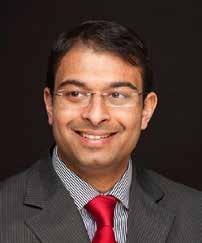
WHY PLODDING ALONG IS AS IMPORTANT
The GCC region is experiencing an oil bonanza, but most parts of the world face debilitating macro-economic conditions that require courage and a wise head to confront them with
HEN you are going through hell, keep going.”
Those were the wise words of Winston Churchill, Britain’s Prime Minister during the time when the island-nation faced its greatest moment of peril. For two full years – til the Germans turned their war machine on the Russians, when all of Europe was painted ash – Britain stood out as a lonely island battling the world’s greatest ever war machine, and holding well.
As much is the case for much of the world at present, caught amongst multiple storm fronts simultaneously, in the forms of the Coronavirus, the Langya virus, skyrocketing inflation, looming winter global food crisis and the Russia-Ukraine war not ending. There is just a lot on the plate at the moment. Skyrocketing energy prices have precipitated one of the most dramatic wealth transfers from energy consumers to energy producers in recent memory, which is great news for the oil producers, including in the UAE.
This is just too much turbulence for most businesses to be handling. And as would be natural, many businesses across the world have failed as a result of economic uncertainty.
And the dust looks unlikely to settle anytime soon. The awe-inducing money printing unleashed in the wake of the
coronavirus pandemic has set the stage for skyrocketing inflation in the United States, and this has forced the US Federal Reserve to raise interest rates dramatically this year on two occasions with two further raises pending in the third and fourth quarters. These rate rises have been mirrored across the world in those economies which are dependent on the US dollar, which is probably everyone.
As a result of that, borrowing costs have increased dramatically. Is this having an impact on inflation? We cannot be so sure so far. Where it does surely leave an impact is on the purchasing power of ordinary consumers; things get more expensive, but their incomes stagnate, and they find borrowing more expensive. This is the case with businesses, as well.
As Pilita Clark from the Financial Times writes, this has been an unusually busy August. With the possibility of job cuts looming in the fourth quarter, it is likely that as many people would want to be seen to be working at this time of the year than perhaps any time during the past 15 years. The pressures on companies in terms of rising costs is poised to put them in a tough spot in terms of staff rolls, and it is indeed rather surprising that employment numbers reported in the United States, the best
resource for such information, have, in fact, increased during the preceding quarter. Was I surprised when it turns out that the definitions have been tampered with? Not helpful.
In all this, the countries of the GCC region have benefitted from what many have termed a one-time oil bonanza. The wisdom of the leadership in these countries is on full show as they have not let the surplus swerve them from their overall plan to make their countries more economically diversified and their populations less dependent on oil incomes. A fine balance between welfare spending and prodding private enterprise has been achieved, especially in the UAE, where the drive for supporting up-and-coming enterprises in high-end sectors has reached turbocharge levels. Case-in point is the Ma’am Social Incubator, a tech accelerator based out of Abu Dhabi, which focuses on social, cultural and environmental challenges. The UAE continues to leverage its position as a magnet for talent from all over the world through improvements in the visa regime for expatriates, with the introduction of the 10-year Golden Visa and the shorter five-year Green Visa. Clearly, the UAE understands the value of being an entrepôt and is heavily vested with maintaining this
September 20226
READING BETWEEN THE LINES with Krishnan Unni Madathil
Krishnan Unni Madathil Auditor, Bin Khadim, Radha & Co Chartered Accountants, writes a bi-monthly macroanalysis on geopolitics, incumbent political structures, global business and finance exclusively for Climate Control Middle East He may be contacted at krishnan.madathil@binkhadimradha.com
image. Such pragmatism will serve it well in the turbulent months to come.




In terrible times like these, it helps to be pragmatic. Following the disruptions to supply chains following the onset of the coronavirus pandemic, supply lines have reopened somewhat, now that the pandemic seems to be under control (though just barely), but geopolitical tensions have placed far greater strains on global supply chains, further leading to price increases and further hurting consumers from California to Kalimantan.
Some dominoes have already fallen. Sri Lanka has already been declared as the canary in the coal mine of sovereign defaults looming across much of the developing world. With Sri Lanka already down, countries such as Ghana, Pakistan, Bangladesh and Ivory Coast, among 53 other nations, have been marked as being at high risk of being at default, thus increasing the borrowing rates for their governments. The cost in
each of these countries will ultimately fall on the taxpayers in these countries.
Faced with so much heat, I would still not descend to the depth of meaningless schadenfreude at the misery being meted out across populations. I would rather spend time to observe how these countries are working their way out of the crisis besetting them, to see the choices and trade-offs they make as they try to climb their way back to normalcy.
The most important person in the world at present may be Ranil Wickremasinghe, the reluctant leader of a country which does not want him on the seat but has no option but to have him there. His country has been victim not only of the poor policy choices of its own leadership but has also been caught up in the winds of events which it has absolutely no control over. His admission on a TV interview following his rise to the Presidency of the republic, where he says with a plain
shrug, “We don’t have food; we don’t have fuel”, struck me as devastatingly and arrestingly honest. Nothing like tough times to bring some much-needed honesty out. It would be worth watching how he carries out the negotiations with international lenders and how he goes about restructuring the debts of the Emerald Isle, while undoing the cobwebs of entrenched interests, welfare dependency and economic slovenliness, which have done the country and its people much disservice.
There could be something for so many other countries to learn from the course Sri Lanka takes from here on. When you are going through hell, keep going. We will be watching you with keen interest.

CPI Industry accepts no liability for the views or opinions expressed in this column, or for the consequences of any actions taken on the basis of the information provided here.





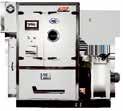
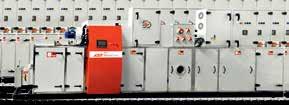



www.climatecontrolme.com 7
REGULATION ROUND-UP
GLOBAL REFRIGERANT TRANSITION

O fully comply with the Montreal Protocol and Kigali Amendment requirement, GCC region manufacturers and government bodies must address not only the proper choice of refrigerant but also adequate training and education of technicians and users. This, in turn, will call for a significant modification of codes and standards.
The major refrigerant transition that the world is undergoing is necessary to protect the stratospheric ozone layer from being destroyed and to address climate change. These issues are especially challenging for the GCC region countries, owing to the highambient conditions. This was recognised at the time of the Kigali Amendment, resulting in the GCC region countries being placed under Group 2 of Article 5.
EVOLUTIONARY CHANGES IN GLOBAL REGULATIONS
It seems like not too long ago that the air conditioning industry had to undergo a major transition of refrigerants to phase out the production and consumption of ozone-depleting substances (ODS). It involved the phase-out of CFC and HCFC refrigerants to chlorine-free HFC and HFO refrigerants (R-134A, R-410A). It is estimated that, to date, the parties to the Protocol have phased out 98% of ODS, globally, compared to 1990 levels.
In 2016, the parties to the Montreal Protocol agreed to the Kigali Amendment to phase down the supply of hydrofluorocarbons (HFCs). It is estimated that a global transition away from HFCs would decrease the potential global temperature increase by up to 0.5 degrees C. Note that the global goal of the Paris Climate Agreement is to limit the global temperature increase to +2 degrees C.
Someone may ask why we need additional refrigerant transitions. Well, most refrigerants that replaced CFCs and HCFCs are greenhouse gases that contribute to climate change or have a high global warming potential (GWP). Greenhouse gases released into the atmosphere cause heat to be trapped. CO2 (carbon dioxide) is a greenhouse gas that can remain in the Earth’s atmosphere for centuries. GWP measures the relative global warming effects of different gases. It assigns a value to the amount of heat trapped by a certain mass of a gas relative to the amount of heat trapped by a similar mass of carbon dioxide over a specific period. CO2 has a GWP of one. The higher the GWP value, the more that particular gas warms the Earth compared to carbon dioxide. GWPs of commonly used HFCs can range from 1 to about 12,500.
The Kigali Amendment to the Montreal Protocol set forth a phased structure to reduce global emissions of HFC refrigerants. It allows each ratifying country to determine its own regulatory structure, such as an outright ban, a quota system or an allocation. The implementation of the Kigali Amendment is considered a phase-down of HFCs, not a phase-out plan, as was the case for CFCs and HCFCs, because a small percentage of those chemicals will continue to be used in blends. It calls for cutting the production and use of HFCs by 85% by 2036 for Article 2 (developed) countries and by 80% by 2045 for Article 5 (developing) countries. The GCC region countries fall under a special high-ambient “Group 2” within Article 5 countries; their target is to phase down HFC use by 85% by 2047. The global HFC phase-down is well underway. As of August 2022, 137 countries have ratified the Kigali Amendment; however, this does not include any of the GCC region countries.
WHAT DOES THAT MEAN FOR HVAC MANUFACTURERS IN THE GCC REGION?
To meet these requirements, manufacturers must switch to new, low-GWP refrigerants. In previous refrigerant transitions, all HVAC manufacturers transitioned to the same refrigerant in most product sectors.
In the case of residential and lightcommercial equipment, for example,
September 20228
Nabil Shahin
AHRI writes a bi-monthly column on regulation-related issues in the GCC region, exclusively for Climate Control Middle East What are
the
implications
for the
GCC region? Would the transition entail significantly modifying codes and standards?
all manufacturers transitioned from R-22 to R-410A. Some HVAC manufacturers have announced that they plan to use R-32 or R-454B in residential and lightcommercial air conditioning equipment.
R-32 is a pure, single-component refrigerant with a GWP of 675, and R-454B is a blend of 69% R-32 and 31% R-1234yf, with a GWP of 467. They are both zero ozone-depleting potential (ODP) refrigerants, and both are rated A2L by ASHRAE 34, meaning that they have lower flammability and low toxicity. Both refrigerants yield better energy efficiency and capacity than R-410A, while behaving in a similar manner to R-410A in high-ambient conditions according to testing. Note that lower flammability refrigerants have been shown to have a very limited number of ignition sources, including an open flame without a flame arrestor present, and a very high energy ignition source that are not typically found in homes or businesses.
Well over 10 million R-32 units have been installed the world over. Asian and Australian companies have largely installed units containing R-32, while both refrigerants have been used in the United States. Manufacturers in the GCC region have not yet announced which new refrigerant they plan to use.
Choice of refrigerants
GCC region manufacturers and governments face new and significant challenges in determining which alternative refrigerants are appropriate for the region.
• A critical element for GCC region manufacturers is how the new refrigerants will perform in highambient conditions, as both capacity and efficiency of refrigerants can deteriorate or drop. For example, R-22 is more energy efficient than R-410A in high-ambient conditions.
• Determining the GWP level is another challenge. This region is in a waiting mode to see the GWP of refrigerants used long-term in the United States and Europe. Currently, the maximum allowed GWP for refrigerants in many countries appears to be 750, with lower numbers for specific product categories and localities.
• Major HVAC component suppliers
– for example, compressor manufacturers – will also determine which refrigerant will be dominant, as most original equipment manufacturers do not produce their own compressors.
• In addition to GWP, other factors must be considered when choosing an alternative refrigerant, such as safety, flammability, toxicity, cost, availability, efficiency, capacity and system pressure.
• GCC region manufacturers must evaluate the results of AHRI’s published research, including their performance under high-ambient conditions. The research was a combined effort of manufacturers, testing bodies, governments, academia and others.
Other considerations
• Codes and Standards: HVACR systems must comply with local safety requirements, including product safety standards, such as UL 1995 and International Electrochemical Commission (IEC) standards, such as IEC 60335. Standards may require leak detection sensors, which vary in quantity and location based on the amount of refrigerant used and the type of system. Since many of the new refrigerants are rated A2L, there must also be a consideration for transportation and fire codes and warehousing building and local codes. International model building codes for mechanical systems, include the International Code Council’s (ICC’s) International Mechanical Code (IMC) and International Residential Code (IRC) and the International Association of Plumbing and Mechanical Officials’ (IAPMOs’) Uniform Mechanical Codes (UMCs.) It usually takes time to update international standards, and a lot of updates are already completed in the United States and Europe.
• Training: Training is a critical area to help reduce global warming caused by refrigerants and improve safety while handling A2L refrigerants.
Addressing the existing equipment and service is key to meeting the HFC phase-down. Sixty per cent of the refrigerants in today’s market is used to address leakage in existing equipment, and 40% is used to charge new equipment.
• Reclamation: There is increased focus on reclamation, which is expected to become a more regulated aspect of new and used HVACR systems. Engineers may wish to consider specifying refrigerants that meet the quality and purity requirements of AHRI Standard 700, a free standard used internationally to ensure that high-quality refrigerant is used in equipment (being adopted by SASO and EOS, for example).
AHRI’s Safe Refrigerant Transition Task Force (SRTTF) currently is addressing every step of the supply chain in the transition to low-GWP refrigerants. The task force comprises AHRI members and stakeholders employed with contractors, government agencies, the fire service, unions, training organisations and other businesses. Many useful resources and fact sheets are listed on the SRTTF website.
AHRI is also working with UNEP on The Refrigerant Driving License (RDL), a globally recognised and acceptable qualification programme that sets minimum requirements for the proper and safe management of refrigerants in air conditioning, heating and refrigeration equipment. It is designed to help prepare A5 countries for a smooth transition to alternative refrigerants, while ensuring the safety of practitioners and consumers.
CPI Industry accepts no liability for the views or opinions expressed in this column, or for the consequences of any actions taken on the basis of the information provided here.
www.climatecontrolme.com 9
Nabil Shahin is International Technical Director, Air-Conditioning, Heating, and Refrigeration Institute (AHRI). He may be contacted at NShahin@ahrinet.org
POSSIBLE TO
CHARGES
Over the last year, the Regulatory and Supervisory Bureau (RSB) - Dubai has granted 24 permits. It has also developed and published 10 regulatory documents. James Grinnell, Head of Water, RSB Dubai, elaborates on the progress, to date. Excerpts from the interview he gave to Surendar Balakrishnan of Climate Control Middle East
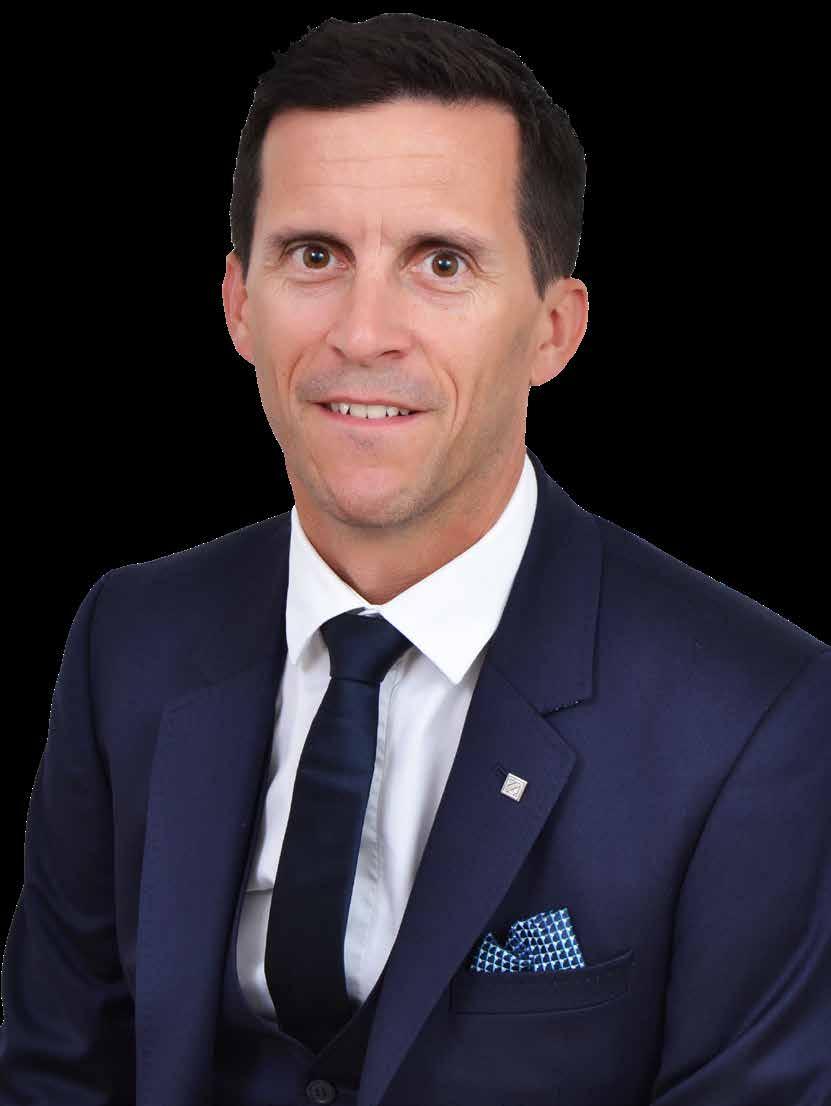
Q & A JAMES GRINNELL, RSB DUBAI ‘NO LONGER
MARKUP DISTRICT COOLING CONSUMPTION AND CAPACITY
’
…
It’s approaching a year since we heard from the RSB about the regulatory framework for District Cooling being introduced. What’s been happening since then?
To answer that, I think it’s worth recapping a couple of things – firstly, what we are trying to achieve by introducing regulations, and secondly, how we are going about it.
Taking the first point, our objective is to ensure Dubai enjoys energy-efficient and sustainable cooling. In many highrise developments, District Cooling is considered the most sustainable solution, and to encourage the right cooling choices, we need customers to see and believe that District Cooling offers good value for money, we need developers to choose District Cooling as a solution marketable to potential property buyers, and we need to ensure District Cooling providers are capable of making reasonable returns to attract continued investment in the sector.
To achieve this, the regulatory regime consists of three tiers…
(1) The Executive Council Resolution, which confers powers and duties on the RSB and the Dubai Supreme Council of Energy and places obligations on market participants. (2) The Permits, which grant the holder permission to provide cooling and/ or billing services, subject to specific conditions. (3) The Regulations, setting out detailed provisions with which permit holders must comply.

Over the last year, the RSB has granted 24 permits to entities providing District Cooling services and/or billing services in Dubai. Half of these permit District Cooling services, whilst the other half permit billing services. We have several other applications in progress, including applications from new entrants to the market.

We have developed and published 10 regulatory documents – and others are in the works – each of which places obligations or incentives on permit holders to contribute to one or more of the three aforementioned objectives. We’ve consulted widely in developing these regulations. We’ve aimed to pitch
the regulations so, for the most part, the existing performance of the sector is compliant. This is important, because it provides a level of stability whilst also requiring the worst performers to make rapid improvements and allows us to raise standards over time.
What can we expect to change as a result of the regime?
There will be some immediate and some longer-term changes. Immediately, billing agents can no longer markup District Cooling consumption and capacity charges. All customers in their apartment or office will benefit from a new standard contract, which we think will better protect them. We have powers to hear and settle complaints, providing additional protection for customers and incentivising companies to resolve complaints fairly before they reach us.
Longer term, we expect to see improvements in energy and water efficiency reflected in lower prices and new District Cooling schemes charge based on the efficient cost of supply. We also want to see cooling load more accurately calculated with further potential bill savings, as a result.
Will prices be reduced?
The Supreme Council of Energy is the entity charged with approving tariffs, and they have capped most existing tariffs. They also require approval of any proposed indexation or escalation of prices. When long-term cooling agreements are considered for renewal, we will assess the tariffs proposed for continued cooling services and make recommendations to the Supreme Council of Energy, accordingly. District Cooling providers will need to obtain tariff approval
where agreements are to be renewed and for any new systems. Indeed, in many cases, customers served by new District Cooling systems are already experiencing lower tariffs for capacity and consumption.
Have you penalised any companies yet?
The grace period has been extended, now expiring at the end of September 2022.
In general, District Cooling providers and billings agents have been working with the RSB, and almost all have already obtained permits and started aligning practices to meet the regulatory requirements. Those that fail to obtain a permit by the 1st of October may be subject to penalties, as set out in the Executive Council Resolution.
What will happen with low delta-T charges? They’re really unpopular with customers and businesses. This is an important part of the standard contract we are in the process of finalising. We recognise that low delta-T charges are unpopular with customers. We also understand that low delta-T can be the result of inefficiency in the system as a whole. The regulations seek to challenge the applicability of low delta-T charges to only those areas where the building owner has clearly failed to operate and maintain his part of the system. Companies that propose to charge customers for returning low differential temperature must first show that they have worked with the customer to overcome the problem and that they have efficiently managed their own, primary, system.
HAVE YOUR SAY!
www.climatecontrolme.com 11
We welcome your views on the Q&A. Write to editor@cpi-industry.com
OVERCOMING PERFORMANCE DRIFT IN PUMPS
Variable-speed parallel pumping technology, with inherent intelligent capabilities, can help systems meet cooling demand without having to operate at elevated levels, thereby lowering operating costs and indirect emissions and enhancing occupant comfort, says Kevin Laidler, Sales Director, MEA, Armstrong Fluid Technology
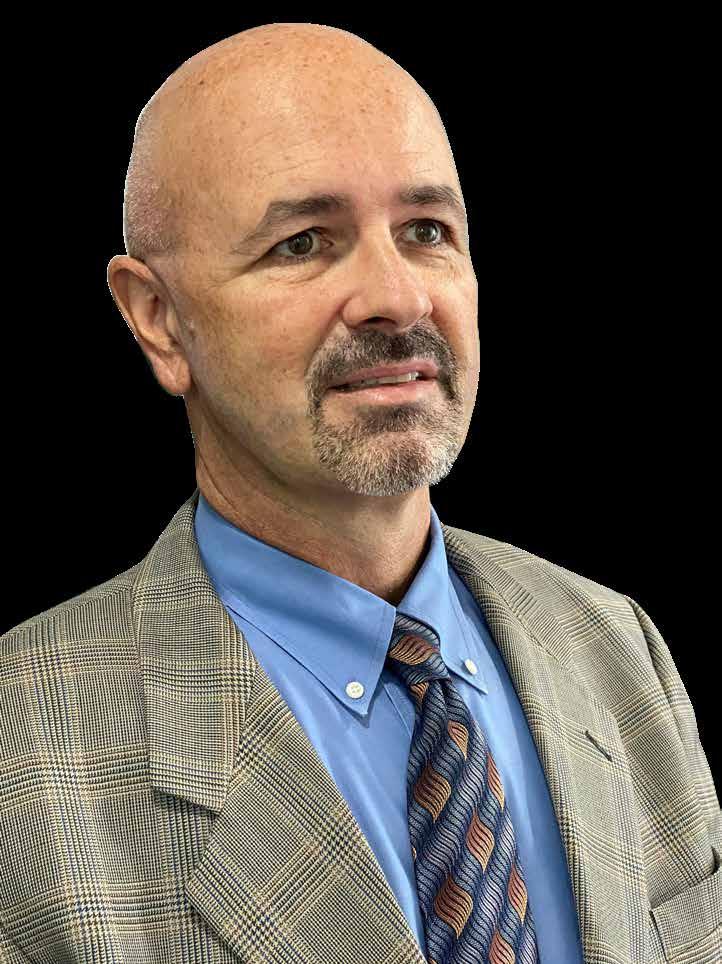
September 202212 PERSPECTIVE
NERGY plays a crucial role in our daily lives, and in our economy.
More than just a basic human necessity, energy is a strong indicator of social and economic development.
As our world becomes more and more urbanised, we are witnessing a rapid increase in the global demand for energy, with predictions for growth of up to 55% over the next 10 years.
In fact, since 1980, energy consumption in the Middle East has grown faster than the region’s GDP. With some of the highest consumption rates in the world, energy demand in the GCC region has been fuelled by population growth, infrastructure developments and the emergence of energy-intensive industries.
With this comes increasing concern around energy security, economic competitiveness and, of course, environmental impact. These concerns have resulted in a global focus on energy-use reduction, with sustainability becoming less of an afterthought and more of a necessity. Government entities and private organisations around the world are increasingly implementing measures to support smarter energy consumption and improve efficiency, in line with the United Nations Net Zero Coalition. The UAE, for example, has outlined a strategy to reduce carbon footprint by 70% by 2050. Saudi Arabia has gone a step farther, announcing plans to reach zero-net emissions by 2060.
But questions remain regarding what can be done to achieve these ambitious targets. To make meaningful progress, we must first understand the largest contributors to energy usage and carbon emissions.
Air conditioning in the built environment is, no doubt, one of the larger contributing factors, accounting for a staggering 50-70% of energy demand in buildings in cities. This figure is likely to be even higher for the Middle East, particularly during the summer months.
Interestingly, for HVAC and plumbing systems, only five per cent of the lifetime carbon footprint can be traced to the manufacturing of components. The remaining 95% stems from energy usage during
the operating life of the equipment. Clearly, then, improved performance efficiencies in HVAC systems offer tremendous potential for reducing overall energy demand.
While HVAC and plumbing systems operate highly efficiently when first installed, over time, system efficiency ‘drifts’ away from the original levels of performance. This ‘performance drift’ ultimately results in systems failing to meet cooling demand, despite operating at elevated levels. In this state, operating costs are unnecessarily high, and occupant comfort is negatively impacted.
It is unfortunate that many facilities operators accept the loss of efficiency in mechanical systems as inevitable. Performance drift can, in fact, be prevented and even reversed by combining intelligent strategies with high-performing systems. With smart
systems operating at less than 60% capacity for more than 90% of the time, variable pumping technology is the most effective way to optimise energy efficiency.
Such smart pumps also utilise sensorless control, which adjusts head, flow, power and speed settings, based on demand, to optimise performance and to enhance energy saving. The building services industry has come to understand that intelligent pumps can function as highly accurate flow meters that provide valuable insights for building managers and operators.
The addition of an active performance management software enables real-time data and system performance to be tracked and reduces the likelihood of performance drift. Monitoring the fluid flow rates of connected pumps helps to optimise energy efficiency and manage operating
pumps, savings start from day one, as they perform more effectively to meet demand.
For example, variable-speed pumps are an effective solution to optimise system performance in buildings. The integration of a perfectly matched pump, motor, intelligent variable-speed controls and a cloud-based active performance management software, creates the highest efficiency pumping solution.
The integrated intelligence allows the variable-speed pump to respond to real-time system conditions, dynamically adjusting equipment operation to match system demand and run at optimal speeds. The result is a highly efficient system that delivers substantial energy and cost savings, compared to conventional, fixed-speed pumps. With most
costs by acting as important indicators of system performance.
Adding such capabilities to HVAC systems will provide valuable insights for building managers and operators. Beyond optimising energy efficiency, a pump manager subscription service also helps to create safer and more comfortable indoor environments through predictive maintenance. The early detection of issues through realtime alerts, helps to prevent escalation to the point of systematic failures or service disruptions, protecting occupant comfort at all times.
Some building operators may be hesitant to upgrade their HVAC systems owing to the initial investment required for such technologically advanced systems. However, the returns from using more efficient systems show the value of careful investments. Statistics
www.climatecontrolme.com 13
Using flow data to accurately inform sizing for larger ticket items, such as chillers, can lead to considerable costsavings by preventing oversizing. Simple payback is usually reached within 3-5 years
PERSPECTIVE
indicate that regular commissioning of equipment prevents a nine per cent performance degradation, helping to maintain optimal long-term pump efficiency, maximise uptime, and avoid disruptions or emergency repair costs.
After years of experience, my recommended strategy for upgrading mechanical systems in buildings starts with upgrading the pumps first. With intelligent connected pumps installed, operators are able to make informed decisions regarding upgrading their system to the most effective and correctly sized HVAC equipment in the future. Using flow data to accurately inform sizing for larger ticket items, such as chillers, can lead to considerable cost-savings by preventing oversizing. Simple payback is usually reached within 3-5 years, but better yet energy savings can continue for the life of the
system. This enables building owners to achieve up to 40% savings on consumption for HVAC operation.
Currently, cities are accountable for over 60% of resource use and an estimated 70% of global carbon emissions. As our urban centres continue to expand, so too does our demand for key resources, such as energy. Fortunately, there has been a noticeable shift towards the adoption of greener solutions. Soon, the integration of sustainable practices into the construction industry will no longer be just a value-added benefit but rather a requirement for projects to gain acceptance and succeed.
To meet carbon reduction targets within the timelines put forward by climate experts, the pace of progress must increase, requiring bold action from stakeholders in all industry sectors. Consultants must do more
to put forward mechanical system designs that take into consideration
ASHRAE 90.1 guidelines and green building applications to promote a sustainable culture in the region. This will enable technology-driven companies to continue developing and offering products which meet or exceed both those guidelines. But one cannot occur without the other, which is why it is imperative that all parties support an integrated strategy for energy efficiency.
CPI Industry accepts no liability for the views or opinions expressed in this column, or for the consequences of any actions taken on the basis of the information provided here.
September 202214
The writer may be contacted at klaidler@armstrongfluidtechnology.com
STAY UPDATED ON THE LATEST HVACR NEWS AND VIEWS AT FOR ADVERTISING OPPORTUNITIES, CONTACT: advertising@cpi-industry.com

OFFICIAL PUBLICATIONPRODUCED BY 6th EDITION | Dubai, UAE www.dcdialogue.com 27 October 2022 Dubai, UAE NEW DATE

September 202216 COVER STORY HVACR TRADING PRACTICES
NOT
FAIR!
Story by Surendar Balakrishnan Editor, Climate Control Middle East
ARTIK J RAVAL, Senior General Manager, Leminar Air Conditioning Company, does not look it but is quite the grizzled veteran of the business. Sounding rueful and vividly remembering historical data, he speaks of how the HVACR market in the GCC region has presented some critical challenges in the past 24 months. And the recent global events, he adds, with an obvious reference to the Russia-Ukraine conflict, have only made them more critical. Listing some of the key challenges as a supplier, he speaks of the increase in the price of raw materials, unprecedented increase in lead times and shortage in shipping – with exorbitant shipping charges to boot.
“The current global crisis has not only increased the price of raw materials and shipping costs but has also had its impact on dire shortage of labour,” he says. “Unfortunately, the market has not reflected a price increase, which has resulted in severe margin erosions. There is not something major that can be done to control this at our end, so the one thing we have done as a distributor is that we have increased our inventory levels to partially mitigate the situation.”
Weighing in, Raphael Khlat, President, Faisal Jassim Trading Company, says prices have increased owing to increase in price of raw materials and owing to inflation, but margins have dropped. “Raw material costs have gone up by 30% but impacted 10% on the final product,” he says. “Prices have increased overall.”
An equally big – if not bigger – pain point, Raval says, is the situation triggered by recently established traders, who through lean operations are able to undercut business through offering lower prices that are not reflective of market costs, including increase in price of raw materials. And to top it all, they are only too ready to give extended warranty periods of hitherto-unheard-of durations, which Raval says, are bereft of logic and are unsustainable. And so rises the sceptre of unfair trading practices by a few notches.
Kevin Laidler, Sales Director, Middle East & Africa – UAE, Armstrong Fluid Technology, is as annoyed with the situation as Raval. Many new suppliers are not qualified or ISO-certified facilities and are offering long-term warranty, he says. Giving long-term warranty does not help

www.climatecontrolme.com 17
HVACR trading practices are far from fair, say industry veterans, pointing to an increase in instances of under-cutting of prices and unrealistic warranty periods to lure buyers
COVER STORY
HVACR TRADING PRACTICES
in his criticism. “The replacement market is a mess!” he says. The only people benefitting are chiller suppliers, who incorporate PLCs, which means no one can touch their chiller till they have the password, he says. The same cannot be said of the pumps replacement market, Khlat says. “When it comes to pumps, there is no respect for genuine parts,” he adds.
WHAT’S FUELLING THE PRACTICE?
Undercutting, as a practice, is not the mere product of the working of a shrewd business mind; the general view is that the ecosystem is such. It would be accurate to say unfair pricing is the love-child of the trend of Low Price Technically Acceptable (LPTA), as encouraged by some clients and consultants.
if the supplier is not in business for more than five years, he says bitingly. Many projects are offering low-cost products, which is not sustainable for the GCC region market, he adds. Khlat puts its succinctly, “The market is now seeing a lot of players and too much of negotiation.”
Subir Kumar Sinha, Manager - Sales, Desiccant Rotors International (DRI), calls it downright unfair that newer, smaller and leaner operators are able to circumvent well-established processes. He speaks of how DRI has a set up of plants and labs and R&D, which will have an impact on pricing compared to a small manufacturer, who sets up shop with only one or two certifications. “People are not complying to quality, to robustness,” Sinha says. “We have been manufacturing and supplying for 25 years, and it is not fair that we are compared to a year-old company. Your 25 years of service and R&D gets blown away when a year-old company gives low price and warranty. They come out of nowhere and sell components at a price 60% less than others.” What makes matters worse, he says, bristling with anger, is they could flee the country, leaving no one to take care of the equipment. “All the defects that subsequently happen have to be managed by the OEM,” he adds.
Raval says it is not necessarily just recently established players. He says there always has been disparity between players in this market. The current situation, he adds, has only made this wider. “It all depends on how a particular distributor looks at running its operations,”

warranty, which is not a standard practice and is not sustainable.”
Khlat says the trend of beyond-thenorm warranties is definitely spoiling the market. He says he understands why people are offering unsustainable timelines. “It (extended warranty) is one more liability, and it is coming out of desperation, and it is not healthy,” he says. Speaking in the context of compressors, Khlat says he is irked by instances of traders tricking end-users into buying by offering a seven- or eight-year warranty. He accepts that compressors can last that long – and beyond – provided end-users understand the value of preventive maintenance and put the money for it. He highlights instances of end-users wanting to save money and staving off maintenance for two years and then waking up to say, ‘Okay, let’s start a maintenance programme.’ That’s where the problem starts with extended warranties, he says.
The situation of under-pricing is not only limited to capital equipment; indeed, the practice of undercutting on the pricing is prevalent in the replacement market, as well, Raval says. Sinha says it is disheartening when clients do not come back to him for replacements. They have too many options and they go to a small trader, he says. “There is no loyalty as such,” he says. “Everything is commoditised.” Khlat is equally pungent

LPTA is one of the reasons established manufacturers and suppliers are finding market conditions challenging, Raval says. Agreeing, Laidler says the onus is on clients to make a difference. Speaking in the context of pumps, he says clients must play an active role to understand the building chilled water consumption and how to reduce the usage to get savings year over year.
Raval feels there are clients and consultants who do understand the value of using the technical- and specificationcompliant products and suppliers and prefer to not compromise their project by using-low priced alternatives.
The challenge remains, nevertheless. And to counter it becomes a necessity. Laidler says Armstrong is countering the situation by offering solutions that offer lower installed cost and lower operating cost by utilising the latest in technology to reduce the carbon footprint for the owner. Raval says Leminar’s approach to the challenge is based on its philosophy of being transparent with its customers. Raval says that along with its global partners the company has always believed in maintaining the quality of the products and services it offers to the market, irrespective of any market fluctuations and trends. “We continue to serve our customers not only as a trader but also as a solution provider with design and after-sales support,” he says. “We believe that customers looking for quality and dependability will continue to prefer working with us.” Khlat says business is
September 202218
Kartik Raval
Kevin Laidler
about relationship, about trust. He speaks of a need to accept the situation of lower margins and adapt to the circumstances. At Faisal Jassim, he says, we have had to adjust operations to make them lighter. “We are having support operations coming from India,” he says. “And we are offering additional services. If you take small contractors, you are not only selling but also installing. You are not only selling a valve but installing it. You are not only selling a cooling tower but retrofitting a total solution on cooling towers. So, it is not about being only a trader but also a service provider and coming one level up the supply chain.”
In general, Khlat says, there is a need to step up on the game and move up to being a specialised supplier, who sells but also installs and offers design aspect advisory services. “If you want to make money, be competitive, because there is capacity availability and lot of principals,” he says.

Raval says Leminar, along with its global partners, has always also believed in continuously innovating its products and processes to ensure it remains in line with, or ahead of, the changing market dynamics. “We now have moved our focus from ‘working hard’ to ‘working smart’,” he says. “The Innovation Center, in Dubai Silicon Oasis, is one of the key initiatives launched by Leminar, in partnership with Rheem. The facility is one of the best in the region, where we engage with our customers to educate them on the innovative and efficient solutions Leminar can provide.” Laidler says Armstrong also emphasises on innovation. “Armstrong has been at the forefront of innovation for the past 60 years and, as early as 20 years ago, has offered a technology for pumping with parallel sensor-less technology, to reduce energy consumption in typical buildings by 34%,” he says.
While manufacturers and suppliers are impacted by unfair pricing and broad unfair trading practices, the other concern is the quality of equipment. Are those offering low prices selling products that are unreliable, deliver lower energy efficiency and fail to improve – or compromise – Indoor Air Quality (IAQ)? This is a genuine concern. Laidler puts it succinctly, when he says the low-cost products will have a higher long-term
energy cost. Raval agrees with Laidler but says the issue is subjective and depends a lot on how a consultant or client understands and values the importance of reliability, energy efficiency and IAQ. “Some of the projects do compromise these parameters to an extent; however, some clients who see long-term benefits do not compromise on these important parameters,” he says.
The broad consensus is that consultants, end-users and MEP contractors are knowledgeable and well experienced and do understand the value of quality products and services. However, due to certain constraints from clients, at times, consultants do consider value engineering and specify ‘equivalent’, which Raval feels is not wrong. “The only support we would expect from the consultant community is to specify like-for-like products with similar specifications and features, and that the MEP contractors negotiate with suppliers based on the same,” he says. “End-users should review the entire life cycle value of the product while selecting and approving the same.”
The word on the street is that the pandemic has skewed the dynamic in the case of even well-meaning consultants, contractors and clients, who prior to the pandemic – and its economic fallout – supported the use of high-quality products. Today, many of them are contemplating accepting lower quality products than in the past, Raval says. Taking a divergent view, Laidler says not much has changed over the years, and that there has been no palpable difference during the pandemic – simply because energy efficiency has never been truly pursued. “I don’t believe the region has adopted energy efficiency strategies for many of the buildings built in the last 20 years,” he says. “Consultants should start designing buildings and take into consideration ASHRAE 90.1 design guidelines and green building applications to promote a more sustainable culture in the region. This will allow the technologydriven companies to offer products that meet or exceed both those guidelines, and the owners will get a more sustainable building for the future.”
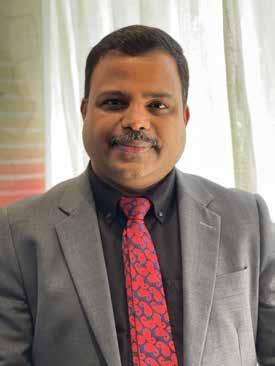
www.climatecontrolme.com 19
The only support we would expect from the consultant community is to specify like-forlike products with similar specifications and features, and that the MEP contractors negotiate with suppliers based on the same
Raphael Khlat
Subir Kumar Sinha
BACK TO BASICS – THE ROLE OF VENTILATION IN IMPROVING BUILDING IAQ

USINESS owners and facility mangers are increasingly recognizing that the management of Indoor Air Quality (IAQ) is one of the key fundamentals to protecting building occupants. Poor IAQ has certainly proved to be a major contributor to the deadliness of the COVID-19 viral spread.
Through my 25 years of conducting HVAC facility assessments, I have observed some extremely substandard HVAC ventilation systems. Sadly, too often I have found these substandard systems in our most dense urban areas, in Nursing Homes and Multi-family buildings that serve people who are at high risk of experiencing health issues.
This column will explore the simple time-tested strategy of improving ventilation that business owners and facility managers can use to minimise viral spread and improve IAQ in non-crisis situations. By improving ventilation, we can give business occupants a more enjoyable and safer experience in the environment where we spend more than 90% of our time: inside of buildings.
One challenge in determining air quality is that air is invisible. While there are some noticeable signs that we have poor air quality (i.e. stuffiness, odours), we do not often have the benefit of an obvious visual like we do with water. For this reason, we need to be able to measure some key variables.
The role of ventilation
There should be no surprise that the preponderance of COVID-19 cases are due to indoor air environments and lack of air exchange. While outdoor air exchanges are typically on the order of more than 500-1,000 air changes per hour (ACH), depending on wind-speed and physical
constraints, we typically experience lower air exchange rates indoors: between 1 and 3 ACH for an average office or school.
To think about the role of ventilation, one only needs to imagine the pristine waters of a running stream or river, as compared to the dank and putrid water quality of a sequestered pond with no freshwater supply. Most of us would much rather get our water supply from the moving waters of the flowing stream (think moving ventilation), versus the staid pond (think no exchange of indoor air).
When it comes to quality, indoor air is no different than water—the more exchange the better. For good IAQ, buildings need to “breathe” and be given an opportunity to expel toxic buildup, which includes viral particles. Without proper working ventilation—both supply and exhaust— building occupants are exposed to longer durations, increasing the chances of the building occupant getting sick.
Most local building codes require that absent operable windows, buildings be
Jeremy McDonald is a principal of Guth DeConzo Consulting Engineers, in New York. Before the pandemic, he was an adjunct professor at Rensselaer Polytechnic Institute. Recently, he was the technical consultant to the New York State Energy Research and Development Authority in development of an IAQ guideline for Higher Education in NY: “Covid-19 Response Guide, State University of New York”. He may be reached at jmcdonald@guthdeconzo.com.
provided with a minimum amount of fresh air. The table, below, demonstrates the typical air exchanges for a college setting.
From the table we see the typical calculated air exchange ranges from very low (0.5 ACH for corridors) to higher values (7.5 ACH for lecture halls). Of course, the required ACH will be dictated by the details of each individual case, but in my experience the values indicated in this table represent typical values.
Of course, calculated values, usually done as part of the HVAC design, can be vastly different than the real-world values. To verify current ventilation values, a
September 202220
Then we can start thinking about the more high-minded approach to a better IAQ future, says Jeremy McDonald To calculate Air change per hour (ACH): ACH= (cfm X 60 min/hr/volume of space) EDITORIAL CAMPAIGN IAQ & Building Tracing Occupancy Category People Outdoor Alr Rate cfm / person Area Outdoor Alr Rate cfm/ ft^2 Default Maximum Occupant Density #/1000ft^2 Outdoor Alr Changes' (ACH) Assuming 10ft Celling* Educational Facilities Classrooms 10 0.12 35 2.8 Lecture Classroom 7.5 0.06 65 3.5 Lecture Hall 7.5 0.06 150 7.5 Art Classroom 10 0.18 20 2.5 Laboratories 10 0.18 25 3.0 Computer Lab 10 0.12 25 2.5 Music / Theater / Dance 10 0.06 35 2.5 Multluse Assembly 7.5 0.06 100 5.0 Corridors 0 0.06 0 0.5 Office Space / Food & Beverage Main Entry Lobbles 5 0.06 10 1.0 Break Rooms 5 0.12 50 2.5 Conference / Meeting 5 0.06 50 2.0 Office Space 5 0.06 5 1.0 Reception Areas 5 0.06 30 2.5 *Changes assuming typical occupant density and 10ft ceiling. For spaces that don’t meet these requirements the Outdoor Air Changes must be calculated according to ASHRAE 62.1
qualified testing and balancing contractor can take airflow measurements. Measured airflow can be compared to the required design value, and adjustments can be made to “retro-commission” the airflows back to the original design intent.
When measuring airflow, it is important to measure the total airflow (what the room experiences), and the outdoor airflow, what provides dilution air for the space. Both factors are important to provide good IAQ. The total airflow will be measured in the space, while the outdoor air flow will be measured at the HVAC equipment, usually an air-handling unit outdoor air intake or a unit vent outdoor air intake.
Continuous Commissioning: A proactive approach to maintaining ventilation

While measurements are taken, problems and deficiencies should be expected. Facilities are living buildings, and just like the human body, degradations and problems should be expected over time. A good TABB contractor will identify the problem and work with facilities to fix the problem and offer a long-term solution.
In the photo (below), which shows an air filter sucked into the heat wheel, a few problems can be observed. First, since the filter wasn’t changed in some time, it became quite dirty, came loose from its support, and became airborne, ultimately being sucked into the unit. Since the unit operated with no filters for some time, the heat wheel, which is intended to recover air side energy from the building exhaust, has become dirty, reducing the unit efficiency.
The short-term fix is to replace the filters and clean the heat wheel. Long term, for an issue such as this, I recommend the following:
1. Review the filter replacement schedule. While manufactures will provide a recommended replacement schedule (about 3-6 months), the schedule will vary as a function of

operating hours of the unit, local weather conditions, time of year, and facility culture.
2. Add airflow measuring device. This particular unit in the photo also suffered from very high air velocity, which contributed to the filters being sucked into the unit. By monitoring the airflow, the system can be trended and alarms set for when the airflow is less than the desired amount, thus ensuring adequate ventilation at all times.
3. Add pressure measuring device for the filter. By monitoring pressure drop across the filter, facility staff can be alerted when the filter is ready to be replaced.
4. Tie in sensors to BMS. To make staff’s job easier, the added data points (air flow and pressure drop in this case) can be tied into the building management system. Alarms can be set so that staff are notified when there is an issue (i.e. high/low airflow, or high pressure drop across the filter), and then rectify the problem.
5. Update Standard Operating Procedures (SOP) to ensure that critical data points are monitored on a continuous basis.
By incorporating lessons learnt into Standard Operating procedures, staff can improve IAQ and know what to look for the next time the system doesn’t seem to be working correctly.
Ongoing monitoring of ventilation: Better IAQ through Continuous Cx Improving ventilation is a challenge. As discussed in this article, fixing ventilation systems requires engineering assessment, testing and balancing, and ultimately, fixing the problem.
With the effort required to identify and fix issues, a little added documentation and also leveraging data monitoring tools
(which I will address in a future column in this series) can go a long way.
Below is a trend from a project in the summer of 2020, in an office in upstate New York. After several staff complaints of “stuffiness,” the facility owner installed a CO2 data logger to evaluate the situation. After a few days of testing, it was clear the CO2 level (which is a relative indicator of IAQ) was rising each day in the mid-afternoon (3pm-5pm). A subsequent investigation revealed that the outdoor air damper for the space was closed. The outdoor air damper was fixed and the CO2 levels dropped to a more manageable level.
Conclusion
Like human health, the road to healthy indoor air takes hard work and persistence. Just like we rely on medical professionals for our personal health, we need to rely on HVAC engineers and Test and Balance contractors to fix what ails our HVAC systems when problems arise.
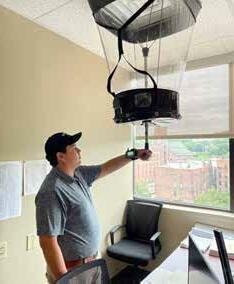
But experts are not enough. When it comes to our personal health, we are still responsible as individuals for eating a healthy diet and monitoring our weight and vitals. Likewise, individual building owners can do much more to keep our HVAC systems fit and working in good condition between visits from HVAC pros. Through monitoring of key data points such as ventilation rates, we can ensure that our HVAC is performing as it should and protecting our building occupants.
CPI Industry accepts no liability for the views or opinions expressed in this column, or for the consequences of any actions taken on the basis of the information provided here.
www.climatecontrolme.com 21
IAQ: WHY PHOTONIC SENSING TECHNOLOGIES CONSTITUTE THE REAL DEAL
Achieving good Indoor Air Quality
Biren Mahendra
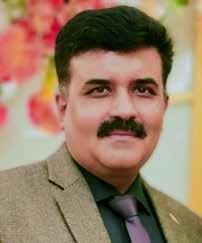
HE virus that instigates COVID-19 is quite the Goliath – and it has created mass awareness of the presence of contaminants in the air, with the menacing potential of severely affecting our health.
It’s not just about the virus, though. The recent Lancet Commission WHO report has rung alarm bells the world over on the significant number of global deaths from air pollution. Indeed, air pollution is posing as quite an insurmountable hurdle for nations to cross to avert a socio-economic disaster.
The WHO roadmap suggests an expansion of the knowledge base and efficient monitoring of air quality for a healthy world. This is easier said than done, due to the complex challenges associated with air quality monitoring and the enormous costs involved.
CHALLENGES WITH MONITORING IAQ
Today, the confusion is compounded with the advent of new entrants into the field, advocating low-cost sensors with lesser accuracies for indoor niche applications. In their current stage of development, electro-chemical sensors, photo ionisation detectors, optical particle counters and optical detectors can do only so much. The quality of the data is questionable when compared to the results from official monitoring stations carried out by conventional gas analyser monitoring stations, in accordance with international standards and methods. Indeed, many intrinsic constraints and limitations are associated with the existing low-cost solidstate sensors.
is much about reliable
• Technically, the signals from sensors not only depend on the air pollutant of interest but also a combination of several effects, such as other interfering compounds, temperature, humidity, pressure and signal drift (instability of signal).
• At high concentrations, the signal from the air pollutant can be strong, but at ambient air levels, the signal is weak, in comparison to the interfering effects, and therefore the utility of the low-cost, solid-state sensors may be severely limited.
• Every type of pollutant gas, like Sox, Nox, CO2 and CO, requires an independent calibrated sensor. Similarly, different sensors are needed for temperature, air flow and humidity. Some vital monitoring of greenhouse gases, like methane, hydrogen sulphide and ammonia, is generally neglected.
• These confluences of sensors call for regular maintenance and replacements.
• The area of coverage is limited, as a small volume of sample air is pumped into the solid-state sensors, thereby limiting the coverage by a maximum of five square metres of area.
PHOTONIC SENSING TECHNOLOGIES
A photonic system for monitoring IAQ brings the promise of higher accuracy with overarching capabilities for diverse applications. The uniqueness of photonic systems lies in an innovative application
of the principles of laser back scattering, statistical mechanics, optoelectronics, artificial intelligence, machine/deep learning and the Internet of Things – resulting in a unique system capable of identification, classification and quantification of various pollutants simultaneously, with accuracies of less than one ppb, and of meteorological parameters with very high precision, sensitivity and accuracy.
The photonic system offers a number of merits over any of the currently available conventional methods. It typically has the following characteristics:
• It is portable, compact, low powered and economical.
• It is inherently a plug-and-play system, as such requiring no setting-up time and no additional civil infrastructure for housing.
• It provides information on all gases and meteorological parameters simultaneously.
• It is a non-intrusive, remote, real-time monitoring system with very high sensitivities and accuracies.
• It is a single system capable of monitoring in both spatial and temporal domains, with high sampling rates.
• The area it covers ranges from one metre to 1,000 metres in radius. The unit can be rotated 360 degrees. The data of air can be collected vertically as well as horizontally.
• The laser beam travels to the targeted area and assists in identifying the source of pollutants.
• Above all, the system requires no routine calibration.
September 202222
(IAQ)
monitoring, writes
Shah, Co-Founder & Director, CATS Ecosystems EDITORIAL CAMPAIGN IAQ & Building Tracing
The system has embedded intelligent algorithms and software operating on a user-selectable remote server with data encryption, ensuring data security and free flow of desired information to authorised users, as per specific requirements.
Besides monitoring a wide range of gases; ambient temperature; humidity; air flow parameters, like speed, velocity and direction; precipitation and solar radiation, the photonic system is able to identify bacteria in the air, given the fact that conventionally, random sample volume of air is taken periodically, and it is only by a stroke of luck that one is able to capture the bacteria in the air.
Monitoring is associated with using consumables for collecting samples, incubating, waiting for microbial growth to occur, discriminating the type, and counting the colony. The complete process takes 3-5 days. And unless sterilisation/fumigation is done in the space, the gram-negative bacteria would spread, infect and do severe damage.
Photonic Sensing is a breakthrough methodology to monitor in situ (real-time) bacteria, viruses, fungi and all types of harmful pathogens in the air. It is a powerful monitoring device that can make the detection process of important clinical bacteria and virus simple, quick and effective by sensing relevant parameters that can be related to infectious processes. Hence, it counters the limitations of conventional systems through:
• Monitoring in real-time
• Scanning 24x7x365 every metre of the space, and high sampling frequency

• Identifying the geo-location
• Validating qualification and quantification of bacteria
• Avoiding retesting, hence saving time
• Reducing the dependence on outside service
Photonic Sensing technology currently detects the following bacteria that generally lead to 80% of infections…
• Staphylococcus aureus
• Escherichia coli
• Klebsiella pneumoniae
• Pseudomonas aeruginosa
• Enterococcus faecalis
• Stenotrophomonas maltophilia
• Staphylococcus saprophyticus
CONCLUSION
Photonic systems provide real-time insights, alerts and longer-term perspectives on how conditions change in the indoor space. Their implementation for indoor monitoring is not complex or remarkably expensive. They can create value in monitoring, modelling and forecasting indoor information, and in interpreting and communicating in realtime in a form that decision-makers can use.
The writer may be contacted at b.shah@cats-global.com
www.climatecontrolme.com 23
REDUCING COOLING LOAD: NEW GLASS ON THE BLOCK
Liquid crystal dynamic glazing helps the construction industry be sustainable beyond HVAC control, says Celine Glipa, CEO, eyrise

September 202224
PERSPECTIVE
OW that sustainability has become a priority for the architecture and construction industries, innovative solutions are being developed to mitigate the environmental hazard of building operations and carbon emissions. For instance, using new materials and technologies for new-build and refurbishment projects is considered acceptable. One of the main areas of intervention involves HVAC operations, with building management systems being able to adjust indoor and outdoor ambient conditions dynamically.
However, to really think sustainably, considerations should be broader than just environmental and should evaluate factors such as the economy and society. In this regard, liquid crystal dynamic glazing can be considered as one relevant example of materials providing a contribution to sustainability in the three aforementioned areas. This solution is well known in façade and interior design for its good insulation properties, solar control, energy performance and visual comfort. But on top of that, the technology is able to increase the wellbeing of occupants.
Dynamic and switchable glass can be used for interiors as well as exteriors. The material behind switchable glazing is the same liquid crystal from a television, computer or a mobile-phone screen. A mixture of liquid crystals and dyes is put between two glass panes. The orientation of the molecules regulates the amount of light passing through. Without voltage, the molecules block the majority of the light, and the glass is dark. When voltage is applied, the liquid crystals change their orientation and the amount of light transmitted, meaning that more light comes in. This transition between dark and bright states is possible in less than a second, creating instant shading. A reduction or increase in the amount of light also regulates the internal temperature. As a consequence, the environment becomes more comfortable, the intensity of the light is regulated and outside views are preserved.
The construction industry knows switchable glass based on electrochromic technology, but this material shows slower switching speed and blue appearance. On the opposite, dynamic glazing, based on liquid crystal technology, is instantaneous and colour neutral. It is a higher-performing alternative, owing to its differentiating materials and technologically competitive advantage.
Due to its instant thermal regulation
properties, liquid crystal dynamic glazing provides a direct contribution to reducing emissions and HVAC operations. Being able to control the amount of light and heat that is absorbed or dispersed, the need for air conditioning and lighting can be from 10-20% less. Of course, this reduction depends on the exposure of the building and the geographical climate conditions.
In the Middle East, for instance, where solar protection is not a luxury, liquid crystal dynamic glazing can be a crucial material to reduce the need for air conditioning but still have a comfortable light and temperature environment. A recent use case of liquid crystal dynamic glazing in action was shown at the World Expo 2020, in Dubai. In line with the Expo’s central theme, Campus Germany – the German pavilion – showcased the most recent advancements in scientific, technological, economic and social progress. The pavilion was built according to sustainable principles, with a shape made of suspended cubes and steel poles covered by a floating roof and shelled with liquid crystal dynamic glass. The choice of these building elements was due to the different weather conditions that the building had to undergo during the sixmonth-long duration of the Expo.
With its strong focus on sustainability, liquid crystal dynamic glazing was the technology of choice to guarantee the best natural light conditions and temperature control. The ecological advantage of using liquid crystal dynamic glazing, indeed, had an impact on energy savings. In total, 61 panels of liquid crystal glass were installed, of which 28 were fixed glass panels, four standard doors, and 29 folding doors. These 1.5-metrewide glass elements were also able to rotate and open, allowing a natural ventilation on cooler days.
Dynamic façades, powered by liquid crystal technology, are therefore able to satisfy two needs harmonically. On the one hand, they help a building achieve its energy efficiency ambition; on the other, they create a comfortable environment, respecting users’ health and wellbeing. Social needs are indeed as relevant when considering materials and processes for any construction project. In countries where green building certifications are setting the standard, programmes such as the Building Research Establishment
Environment Assessment Method (BREEAM) and Leadership in Energy and Environmental Design (LEED) have made it clear. A building’s performance must consider societal factors besides economic and environmental. In some other countries, the same sensitivity has been shown. Initiatives and methodologies for building design, like Estidama, indeed want to spread a sustainable mindset for environmental, economic, cultural and social value creation.
Liquid crystal dynamic window technologies prove to have a direct impact on these factors. The glazing supports occupants’ natural body clock rhythms throughout the day, offering a more positive effect on health, wellbeing and, for office spaces, on productivity, as well. By maintaining constant thermal and solar control, this technology reduces PPD (Predicted Percentage Dissatisfaction) from 21% for normal double glazing to six per cent for solar shading glass. Differently said, people working in an environment with ideal balance between light and thermal regulation are less likely to get sick. Research by Merck KGaA, Darmstadt, Germany, the parent company of eyrise®, suggests that a reduction in absenteeism equates to an extra 4.4 days of productivity gained. Translated into financial results, it means a USD 860 million saving on health costs and a USD 82.5 million saving on energy throughout a year.
As the construction industry is expected to consider the challenge towards sustainability beyond sole environmental factors, technologies, such as liquid crystal dynamic glazing, can be crucial drivers for value creation. In the light of the aforementioned considerations, the positive impact is not only on a building’s carbon footprint and a decrease in energy needs but is also on creating happier communities and driving up economic value.
The author holds a double doctorate in polymers and electrochemistry and has been involved with the development of liquid crystal glass from the laboratory to the boardroom. She may be contacted
writing
CPI Industry accepts no liability for the views or opinions expressed in this column, or for the consequences of any actions taken on the basis of the information provided here.
www.climatecontrolme.com 25
through
to marianna.trimarchi@merckgroup.com
POINT
TERA MALL’S TRYST WITH ADIABATIC COOLING

Owner says two-stage evaporative cooling technology is helping him align with Saudi Vision 2030, in terms of energy savings
Summary
Tera Mall shopping center, in Saudi Arabia, required an innovative power-saving solution to provide shoppers with a comfortable yet sustainable indoor climate. Convinced by Oxycom’s IntrCooll’s performance, its partner Dosan suggested this two-stage evaporative cooling technique (IDEC) as an ideal solution. Ultimately, 49 Oxycom IntrCoolls now provide the Tera Mall with a cool, comfortable and healthy climate with high energy savings.
About Tera Mall and Dosan Adorned with Paris-styled arches and domes, Tera Mall is a beautiful mega shopping center situated in Taif, Saudi Arabia. Tera Mall was designed in the French architectural interface. Aiming for a greener future, Tera Mall looks for sustainable ways to provide customers with the best shopping experience in a cool, comfortable and healthy environment.
Dosan, Oxycom’s partner in Saudi
Arabia, is a trading and construction company. With almost 20 years in the field, the company specialises in building retail showrooms, shopping malls, hotels, restaurants and residential buildings. Recently, Dosan has set up a sister division dealing exclusively with Oxycom’s sustainable air conditioning solutions for Saudi Arabia. Mohammed Mansour is the managing partner for this division.
September 202226
CASE-IN
The challenge: Finding the right energy-saving comfort cooling solution for an iconic and innovative building
Tera Mall’s owner, Dr Abdulkhader Al Obaikan, sees it as his mission to contribute to Saudi Arabia’s Vision 2030: A vision for the future of Saudi Arabia with sustainability, energysaving and CO2 reduction at the heart of everything the Kingdom does – from policy development and investment to planning and infrastructure. Along the same lines, Dr Al Obaikan has been trying energy-efficient and environmentfriendly solutions for 20 years. With this in mind, he builds his shopping centres, hotels and offices, investing in innovative ways to save energy and reduce CO2 emissions. He had utilised solar panels as a power-saving measurement in the past. However, given the size of the new shopping mall – 60,000 m2 – and the amount of comfort cooling required to provide its shoppers with a comfortable environment, it became clear that using only solar panels would not be a sufficient power-saving move. In order to align Tera Mall with Vision 2030, an alternative power-saving solution needed to be employed.
The Solution: Sustainable comfort cooling with innovative two-stage evaporative cooling (IDEC)
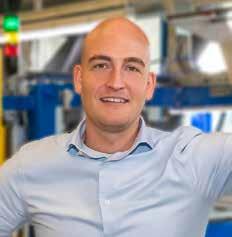

In 2018, Dosan learnt of Oxycom’s sustainable cooling technology while attending The Big 5 Show, in Dubai. The patented two-stage evaporative system, IntrCooll provides cold, fresh and healthy air with up to 90% less energy consumption than conventional AC solutions. Noticing its potential, Dosan understood that the patented two-stage evaporative technology (IDEC) could be a power-saving solution for companies in the
Middle East looking to employ energyefficient climate control. As Dosan was involved in the construction of the Tera Mall, Dosan suggested installing Oxycom’s two-stage evaporative cooling technology. An elaborate introduction and a clear demonstration of the IntrCooll in another project in the Middle East convinced Tera Mall’s owner about the technology’s power-saving abilities, and an agreement was signed. Nevertheless, the project did come with some challenges.
Tera Mall’s management decided to build the total number of IntrCooll units in a phased manner till the desired indoor temperature is achieved. Initially, 20 IntrCooll units were installed along with other passive but expensive cooling solutions. To beat the heat and achieve the desired indoor temperature, the doors were narrowed to keep out the warmth, and the beautiful large glass dome was isolated against the sun’s rays. These measurements worked partially but were not nearly enough.
After some negative feedback from the mall’s customers about the indoor temperature, it was decided to install additional IntrCooll units to attain the desired indoor temperature.
In conclusion, the flexibility of IntrCoolls
to be easily installed to the structure of Tera Mall and IntrCooll’s ability to adjust with the growing demand and changing conditions of the building, along with higher energy savings, was a notable feature.
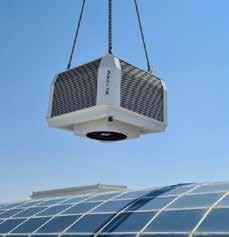
The results: Comfortable shopping experience with massive energy savings
Over the course of more than two years, a total of 49 IntrCoolls have been installed in Tera Mall. The two-stage evaporative cooling technology enables Tera Mall to cool the shopping centre down to a comfortable temperature, with abundant fresh and healthy air combined with substantial energy savings compared to conventional air conditioning.
A look at the future
Since the mini overhaul in the second half of the project, Dr Al Obaikan is satisfied with the IntrCoolls technology and the collaboration with Oxycom and Dosan. Now having a turnkey contract with Tera Mall, Dosan manages, operates and maintains the IntrCooll units 24/7 with a dedicated team.
This project has ushered great future cooperation amongst all parties involved.
www.climatecontrolme.com 27
Bart Reinders, Managing Director, Oxycom
NO ATTENDANT HEADACHES
Switching to inverter air conditioning units no longer involves replacing the existing ductwork, considering the systems come equipped with auto-ESPadjust functions with DC motors to match the existing duct air flow and static pressure requirements, says Brij Sharma, Head of Engineering Sales, B2B HVAC Engineering Team, LG Electronics Middle East & Africa
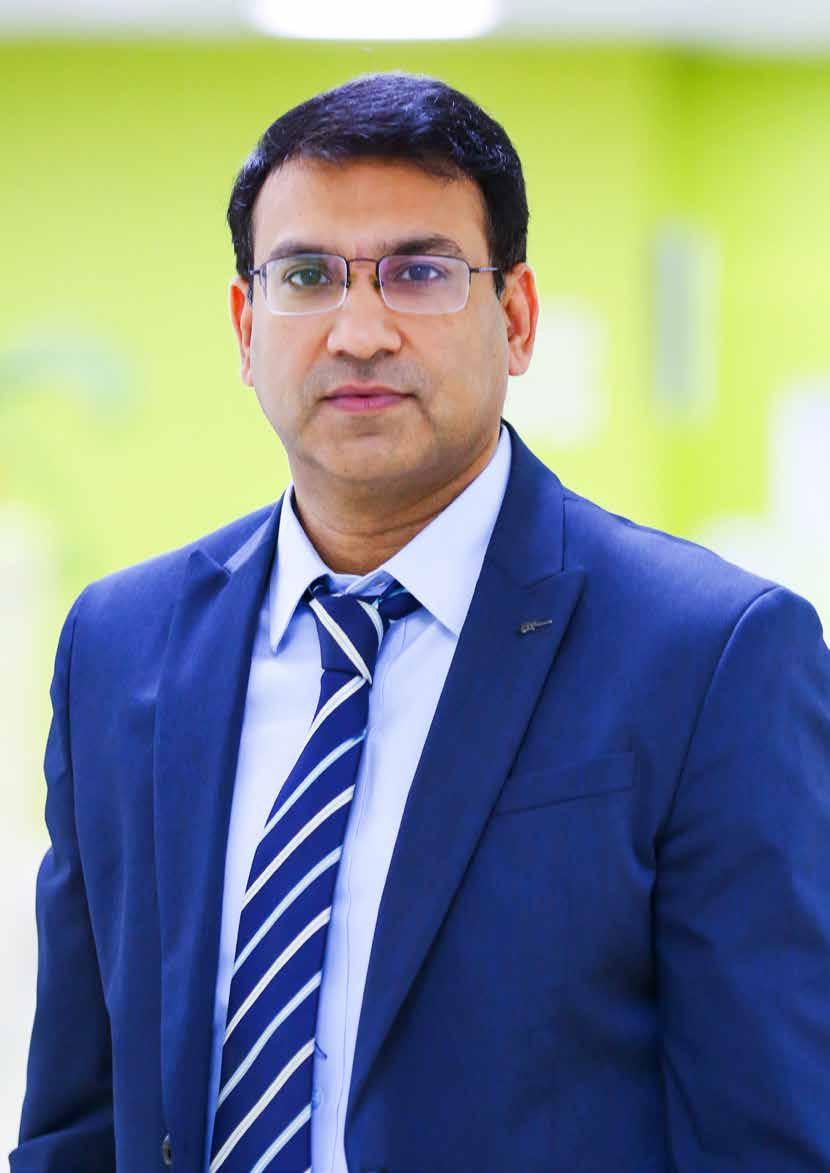
PERSPECTIVE September 202228
more properties get handed over each year, the pressure on property owners and management companies to keep high occupancy and, thus, profitability, is immense. In this increasingly competitive property market, the race to keep ahead of this curve is becoming challenging.
Property owners are looking for replacement and, sometimes, retrofit of old AC units, primarily due to:
• End-of-life replacement
• Low energy efficiency
• Improper indoor conditions
• High maintenance costs
• High sound levels
• Non-availability of parts
Whatever may be the reason, replacing or retrofitting an existing AC system presents opportunity to upgrade them to better technology products that are more efficient, and have better control on indoor conditions.
ENERGY EFFICIENCY
One of the second-most important factors while deciding which property to rent, after the rent amount itself, is the cost of energy – primarily the AC bills. For properties that use an old DX split system, the cost of energy to keep the air conditioning system running is particularly high. The reasons for that are mainly as follows:
• Old technology compressor design
• Old technology fan motor design
• Absence of ESMA regulation to monitor energy efficiency
• Improper or insufficient maintenance over a period of time.

The main drawback of old technology air conditioning systems has been the use of ON/OFF-type compressor design. This requires the compressor to run at full capacity, even though it is well established that air conditioning systems need to run at full capacity only five per cent of total run time.
INVERTER ACs, DECIDEDLY
Inverter design of compressors, coupled with electronic monitoring of refrigerant flow, enables the system to run at exactly the same capacity as the room load demands at that time. Effectively, the AC will be running on part-load capacity 95% of run time. This ability to run the compressor on part-load leads to over 30% drop in electricity consumption.
BETTER INDOOR CONDITIONS
Another drawback of ON/OFF-type compressor design is the continuous switching on and off cycle of the compressor. This leads to high humidity or high temperature swings in occupied space, both of which are undesirable.
Inverter AC units not only delivery exact capacity to the occupied space at all times, but they also have builtin intelligent logic to monitor indoor conditions and provide precise temperature control – and, thus, tighter control on humidity. No temperature swings exist due to this mechanism, and the end-user experience is much more comfortable.
LOWER RETROFIT DOWNTIME AND COSTS
Retrofit downtime has a lot of bearing on how decision-makers plan these retrofits. Often, the costs associated with retrofitting ACs spiral upwards drastically when associated ductwork needs replacement.
Inverter AC units come equipped with auto-ESP-adjust functions with DC motors to match the existing duct air flow and static pressure requirements. This prevents the need to retrofit entire ductwork and, thus, false ceiling, greatly reducing the retrofit budget requirements. These systems can use existing refrigerant pipe network, as well, thus impacting the retrofit down time.
CONCLUSION
Inverter technology ACs constitute the way forward for retrofit and replacement markets. Upcoming regulations are also expected to encourage decision-makers to use higher energy-efficiency devices. The decision-makers should self-evaluate the benefits versus cost aspect of upgrading to inverter-based AC systems and take conscious decision to enhance the end user experience and contribute to the environment at the same time.
www.climatecontrolme.com 29
CPI Industry accepts no liability for the views or opinions expressed in this column, or for the consequences of any actions taken on the basis of the information provided here.
The
writer may be reached at: brij1.sharma@lge.com LOOKING FOR REFRIGERATION PRODUCTS? www.refrigbuyersguide.com TO LIST YOUR COMPANY FOR FREE, VISIT: www.refrigbuyersguide.com/register FOR ADVERTISING OPPORTUNITIES, EMAIL: advertising@cpi-industry.com The largest database of refrigeration products & suppliers in the Middle East
‘SEEKING ACCURATE INFORMATION, LEVERAGING RELATIONSHIPS’
ould you elaborate on your presidential theme – the intrinsic message of the theme?
The motivation for the theme is fundamentally driven by two big factors.
One is that ASHRAE has had 60 years of unparalleled success, and it can happen that you have been so successful for such a long period of time, you might get a bit complacent. Secondly, we are in a time of great change; the pandemic has accelerated that change – the way we live, the way we work, the way we shop and so on. It has created an age of uncertainty. In this age of uncertainty, my theme is securing our future. We want to shepherd ASHRAE through these changes, through these uncertain times to makes sure our future is secure.
What is your specific plan of action to support the theme?
So, how does securing our future work?
From my personal life, I had lots of experience in securing my future. I lived in Dhaka in 1971, and I was witness to the break-up of Pakistan into Bangladesh and Pakistan. At that point in time, my wife was from Bangladesh – she was Bengali. I came from West Pakistan, and my dad served in the army. I had strong relationships on both sides. Because of these relationships, I had access to a lot of important and relevant information, which helped me to make a change and decide to move out of harm’s way as soon as possible. So, the lessons I drew from that were that to secure your future, you need to build very strong relationships. And the same thing applies to ASHRAE. You need to have very strong relationships in the industry with our associates’ side and build the networks. So, strengthening relationships and leveraging those relationships are important. Secondly, to be secure, we need accurate information about the market. Where is the market headed? Where is the technology headed? Where is the industry headed? We need reliable and accurate information on these, which would help us secure our future, provided we are ready to embrace change. So, the three elements are relationships, knowledge and embracing change. And they apply to all kind of organisations. They apply to most situations.
Now out of that theme form these core principles or requirements. It emerges: How are we going to build those relationships? How are we going to get the information?

September 202230 Q & A FAROOQ MEHBOOB, ASHRAE
Farooq Mehboob, ASHRAE President (2022-2023 term) in conversation with Surendar Balakrishnan of Climate Control Middle East
And how are we going to embrace change? All these require ASHRAE to be diverse, equitable and inclusive or DEI. So, DEI is a basic requirement for securing our future. So, from that flows the question: How do we ensure that we are diverse, equitable and inclusive? That will come if we broaden our horizons and have greater participation in society. As ASHRAE, we have members in 130 countries and 200 chapters, and we have 55,000 members. But when it comes to participation in society at the society level – I am now talking about our regions and chapters – the pyramid narrows, and we have a relatively small number of people. If we are going to diversify, and be more equitable and inclusive, we need greater participation. So, the objective then flows from DEI to participation.
How do we get more members to participate? To do that, we need to be able to share information with our members. So, we interest them in taking part. That means, we need greater transparency, which will lead to improved participation, and that would lead to DEI, and that is how we will strengthen relationships.

From this theme, we crafted several initiatives. So, my theme also has 16-17 different initiatives. One such key initiative is a global HVAC summit in Istanbul. If we are going to strengthen our relationships across the industry and across our associate societies, it would be through bringing together industry players, academics as well as our associate society members and similar organisations, like CIBSE and REHVA and others. For this summit, we have chosen six different areas of interest, including mitigating climate change, the development of the workforce across the industry, IEQ and decarbonization. So, the intent is that across two days of the summit, all these will be addressed by the best experts in the field; and the entire Board of Directors of ASHRAE will be there and also the entire Region at Large leadership. And at the end of this, we should be able to craft an action plan for our industry and on how we are going to address the conclusions from the summit and bring them to the decision-makers.
Another key initiative is that we are having a series of industry roundtables, which are fundamental for brainstorming and discussing the needs of the market. ASHRAE has served the industry for 125 years. We have done a tremendous job, and we want to serve better The first roundtable is in August in Tokyo, followed by Madrid
in September, Atlanta in February and in Monterrey in Mexico, which is a big manufacturing hub.
To give that transparency to our members and to get them to participate, we are following a policy of sharing our Board and Council meeting discussions; that way, we will make it possible for every member to be on top of the issues, and that would stimulate interest in participation. Sometimes, participation can be a daunting process.
We are also communicating that globalisation and exchange of knowledge is not a one-way street. We need to learn from each other. For that reason, it is important to connect our chapter in North America with other chapters. There is phenomenal knowledge bank in Indian chapters, so I am suggesting we join hands and we speak the same language as engineers.
What steps are you taking to increase the membership number of 55,000, given that the universe of HVACR professionals the world over is vast?
I believe our membership is strong and stable. Every organisation that is volunteerdriven would like to have more. I was talking of more members that could participate, which is currently around 3,000, and we want to make that 5,00010,000. These are the people who sit on the committees, do research and write the standards. Increasing that number by getting more participation will exponentially increase your capacity to deliver.
Has ASHRAE any plans of revising the recommendation for minimum
air changes, as called out for by some in the wider industry?
You are probably aware that when the pandemic happened we set up a task force – the ASHRAE Epidemic Task Force – and we had more than 100 volunteers. Now, these smart experts representing ASHRAE said that COVID was airborne. We as ASHRAE demonstrated this and took it to WHO. The task force had worked in areas relating to IEQ, and IEQ is not only about air changes; it is also about a whole host of other factors. IEQ is absolutely top priority for ASHRAE, and it is one of six subjects we will be discussing in Istanbul. As for your question, I would leave it to the experts. I would not like to give ASHRAE’s technical position. Dr William Bahnfleth, chairing the task force, is one of our leading experts on IEQ, and there is lot of work going on.
We as Climate Control Middle East are running an editorial campaign on the need for building tracing to audit the IEQ performance of buildings. Would you say building tracing is essential for minimising the suffering or reducing the number of deaths from future possible pandemics?
Every city and every country has different locations and priorities. If I look at Pakistan or India, maybe the Outdoor Air Quality (OAQ) is worse than Indoor Air Quality (IAQ). I tried that out in my home in Karachi, because I was concerned about CO2 and particulate matter. And in Dubai on some days, OAQ is far worse. I do believe there certainly is great need for monitoring IAQ and reporting that. I am in
www.climatecontrolme.com 31
favour of your suggestion here that buildings should be audited for IAQ performance. And I know that in the UAE, this movement is pretty strong and that many companies are offering this service and that building owners are calling them to survey and report on their IAQ performance.
It is a long-held belief that the building industry in the region operates in a disjointed way to achieving building performance objectives, be they related to emissions reduction or IAQ. And the general approach is businessas-usual and lack of accountability, unless perhaps when building to own. A certain green ethos is lacking, and the usual excuse seems to be, ‘Times are tough, so let’s solely focus on financial wellbeing, instead.’ What are your thoughts on this?
My message would be that the time is fast slipping away from us. We don’t have the luxury to wait on decarbonization, and for this reason, ASHRAE set up a task force on decarbonization the year before. There are several aspects to it, including operational carbon and embodied carbon. It is not only about designing new buildings that adhere to the latest standards, because the existing building stock is probably 97% of all the buildings in the world. So, we have to take action on operational carbon in existing
building stock. Just in July, ASHRAE put out a position document on operational carbon and, at the same, we are strongly pushing for building performance standards in the area of decarbonization.
The task force is helping us formulate new policy document and helping us write new standard. And at the same time, we are working to make this decarbonization effort inbuilt in the ASHRAE structure, so we don’t need an additional body to do it.
The world has made substantial progress with renewable energy. And realistically speaking, given the fact that some of the cooling equipment we have running in our midst are energy-intensive, how much progress can we make with existing forms of renewable energy? Futuristically speaking, where is air conditioning headed? Can we sustain our approach involving mechanical ways of cooling? Or, do we have to do a hard rethink for sustainably managing our indoor climate?
I think this is a great question. The point is, it is not only about energy but also about water. In the case of some buildings, it is more efficient to use water-cooled equipment than air-cooled systems. That would mean the system would need substantial quantities of water, so we
need some other technology that does not use water and, at the same time, is driven by renewable energy, electricity or waste heat. That is the area the UAE is looking at for transitioning from huge water-cooled plants to those driven by heat or electricity. As the energy supply gets constrained, we will have to transition. Necessity is the mother of invention, and I think the key role will be played by renewable energy.
How important is mentorship to the development of the HVACR industry?

There is no second thought in my mind about the need for workforce development, because if we transition to a different technology, we will need a workforce that is able to deliver, and that is why ASHRAE has a partnership with UNEP. And we believe we can really concentrate on workforce development. After all, UNEP and ASHRAE have successfully worked together on transitioning to a safer refrigerant. Work force development is one of the six areas we are going to develop.
HAVE YOUR SAY!
We welcome your views on the Q&A. Write to editor@cpi-industry.com

September 202232
Q & A FAROOQ MEHBOOB, ASHRAE STAY UPDATED ON THE LATEST HVACR NEWS AND VIEWS AT www.hvacafrica.com



















SOURCE IT. OWN IT. BRAND IT. MENA’s No.1 event to meet private label & contract manufacturers from across the globe NOV 2022 DUBAI WORLD 8-10 TRADE CENTRE Official Knowledge Partner Category Sponsor Official SupporterConsumer Insights Partner Association Partners Media Partner REGISTER TODAY! FREE ENTRY FOR TRADE VISITORS WWW.PRIME-EXPO.COM
BUILDING BRIDGES BEYOND THE EUROPEAN HVACR INDUSTRY

Eurovent President, Raul Corredera Haener, speaks on trending regulatory issues in the EU, Eurovent’s ongoing and future international collaborations and on the upcoming Eurovent Summit, from October 25 to 28, in Antalya. Excerpts from the interview…

Q & A RAUL CORREDERA HAENER, EUROVENT
Digitalisation has come to the fore in recent times. What are the main objectives of the Association?
Eurovent represents the European HVACR industry. It is currently home to 16 national industry associations from different European countries, 90 direct Corresponding Members (manufacturers) and seven Associate Members (other stakeholders from the HVACR industry). The majority of manufacturers under the Eurovent umbrella are small- and mediumsized enterprises.
Among many objectives, we focus on connecting our industry and representing its unified voice towards the European authorities and beyond, while providing support and guidance to all members, regardless of their size or turnover.
Eurovent’s members come from close to 30 countries, and there is something special about sitting around one table with your competitors and discussing common goals as colleagues. After all, we are all in favour of the same principles, those that are guiding Eurovent, as well: Levelling the playing field and diminishing trade barriers while making sure that innovation supports our strict standards for energy efficiency, Indoor Air Quality (IAQ) and digitalisation.
An additional issue that receives particular attention and grows in importance day by day is that there is an increasing urgency related to growing environmental challenges, such as global warming, climate change, indoor and outdoor pollution, emissions that contaminate the atmosphere, food safety and water shortages. Eurovent and its members are committed to meet these environmental challenges and to innovate while contributing to green thinking throughout all sectors of the HVACR industry, as we realise that this sector plays an essential role in tackling them.
It has been nearly a year and a half since you have been leading Eurovent. You are also a Senior Director at Systemair. How do you manage to fulfil the responsibilities of both the positions?
The role of the President comes with many responsibilities. One of our crucial tasks is coordinating the differing points of view of the Association’s stakeholders, making sure that our decisions are favourable
not only to my Board colleagues but also to the Association as a whole and all its stakeholders. On the other hand, I have to make sure that all Board, Commission and General Assembly meetings are conducted smoothly with productive goals.
I could not simply manage all that is required, despite my ability and experience to do so. Our outcomes are achieved also thanks to my colleagues in the Board, the Chairmen, Vice-Chairmen and many dedicated persons of our Product Groups, as well as our Secretary General and his Team. They always have my trust and support in taking good decisions, which have a positive outcome and drive the Association in the right direction. This work is not easy, but our joint industry ideals are brought forward, thanks to the dedication and support of all those who voluntarily walk an extra mile to do so.
of quality ventilation systems within their residential and working spaces prior to the start of the COVID-19 pandemic. Although understanding of the importance of good IAQ is increasing, we still have a lot to do to raise awareness of the role of our industry and the sustainable and effective solutions it offers in this respect. We have notably been advocating for strengthened Indoor Environmental Quality (IEQ) provisions in the revised Energy Performance of Building Directive (EPBD), which is a cornerstone of building sustainability and needs to receive the attention it deserves; and Eurovent will not cease its efforts to help IEQ make its way into European-wide legislation.
We are also looking to making sure that the policies of the European Green Deal fully deliver on the promises held by our industry for decarbonisation. Eurovent is strongly involved in the current revisions of many European legislations touching this subject, including the F-Gas Regulation,
In regard to managing my daily tasks at Systemair, I have realised over the past years that in order to have a good outcome in any project or task at hand, one needs a productive team that has a shared vision. Any project or task becomes easy with the right team.
Since your election as the President, which issues, do you think, have gained the most importance in the eyes of the Association?
The year 2022, so far, has been a great one, since we have been able to meet in person and implement some of the core tasks at hand that we have always intended to push forward. Our main priority is to raise awareness on the important role our industry plays in society.
Quite frankly, the majority of the public was unaware of the importance
the Ecodesign Regulation for Sustainable Products, the Energy Performance of Buildings Directive, the Environmental Product Declaration schemes, legislation aimed at boosting renewable heating and cooling and phasing out of fossil fuels, and more.
Another important issue we have been focussing on is globalisation. While Europe is continuously streamlining policies between the different Member States and overcoming existing national barriers to create a true Single Market, the industry should also be aware of what is happening in other countries and regions of the world. What originally started with one regional chapter – Eurovent Middle East – has developed into a comprehensive and coordinated international effort, with the goal to create a level playing field and the highest efficiency and sustainability standards all over the globe.
www.climatecontrolme.com 35
We would like to expand our relations with organisations and associations in the HVACR sector not only in Europe but also beyond the European borders, and Türkiye is a well-found starting point
In line with our focus on international trade, we are hosting our 2022 Eurovent Summit in Türkiye. The main goal of the event is to act as a bridge between different industry stakeholders and geographical regions.
How do you see technology changing the HVAC industry in a post-pandemic world?
The central technological problem at the heart of the HVAC sector remains the same as always: How to provide clean and healthy indoor air in a safe, energy efficient and cost-optimal way. If previously the focus was more single-mindedly on energy efficiency and cost savings, we might now see better appreciation for IAQ. It is hard to say in which direction this will take the development of new technologies. It is worth noting that our industry is turning its attention more and more towards better monitoring, improved connectivity and smarter controls, which offer gains on all fronts, from better energy efficiency to improved IAQ and more.
Ventilation and IAQ have received more attention, and consequently, there has been a boost in sales of plug-in HVAC accessories and products that can provide higher air quality at relatively low costs and without redesigning the whole system. Whether this trend will last remains to be seen. In the long term, HVAC systems must be designed with excellent IEQ as a main objective. We also see more business coming from renovation projects rather than new constructions, and increased importance of state support, subsidies and public financing schemes.
Could you elaborate on the services Eurovent offers and how they benefit the industry and society? Eurovent is a broad organisation fully committed to serving the industry and its stakeholders. We add value and promote the interests of our industry in a variety of ways, including through advocacy and representation, product performance certification, market data collection and more.
The role of the Association is to unify the European HVACR industry and support manufacturers in the EU regulatory world, by on one hand representing their voice in front of the authorities, and on the other supporting them in interpretation and application of relevant EU legislation. The Association also facilitates pre-normative research and develops recommendations, which provide codes of good practice for particular issues in the absence of clear standards or legislation. Finally, it is also involved in education and awarenessraising initiatives to promote our industry and the sustainable and effective solutions it offers.
As I have already mentioned, Eurovent runs an independent chapter, Eurovent Middle East (EME), home to the region’s leading manufacturers and other stakeholders active in the field of HVACR. EME plays a vital role in the development of regional regulations and standards and the projection of Eurovent principles in the region.
What most people in the market recognise us for is our certification department. ‘Eurovent Certified
Performance’ is a worldwide leading certification scheme for over 40 different HVACR products. This third-party voluntary certification was set up in 1990s and has meanwhile become essential in ensuring the level-playing field, as it certifies through various tests and audits that the catalogue values given by a manufacturer match the actual performance of the product line. To ensure impartiality necessary for the certification accreditation, all activities of Eurovent Certita Certification (ECC) are run independently from the Eurovent Association. Being a member of the Association is not a prerequisite to be certified and vice-versa.
Eurovent Market Intelligence (EMI) is the leading statistics office for the HVACR market in Europe, Middle East and Africa, providing key market data since 1994. The guiding principle of this Eurovent department is to establish a detailed map of these markets with direct participation of the manufacturers. I’m proud to say that EMI collections have tripled their overall number of participants in the last six years, and today, they reach more than 400 manufacturers in the EMEA region within 18 different programmes.
The Eurovent world also offers building quality and performance certification through its unit, COPILOT, which offers independent ISO 17065-accredited certification of due diligence of technical systems and building commissioning. Its mission is to create certification solutions that improve the building industry. To complete the 360-degree approach, our unit, PRODBIM offers a unified European solution to the many formats that coexist within BIM today. It delivers an online database, which presents product data of manufacturers within a standardised framework, usable for different BIM environments, as well as frequently used database systems and building codes throughout different countries.
Why are you hosting this year’s Eurovent Summit specifically in Türkiye? And what do you look forward to at the event?
The Eurovent Summit is a biennial event hosted in different regions of Europe in rather medium-sized cities that not everyone might be fully familiar with. For this year’s edition, we decided to host it

September 202236
Q & A RAUL CORREDERA HAENER, EUROVENT

OFFICIAL PUBLICATIONPRODUCED BY THEME: DISTRICT COOLING AND THE PUSH TOWARDS ZERO-ENERGY CITIES 7th EDITION | Cairo, Egypt 14 January 2023 Cairo, Egypt www.dcdialogue.com NEW DATE
in Antalya, Türkiye, home country to one of our Member Associations, ISKID, a Turkish Air Conditioning and Refrigeration Manufacturer’s Association.
One of the main reasons we selected Türkiye is because of this edition’s theme, #BuildingBridges, which focuses on connecting manufacturers and consultants, planners, installers, trade associations and policy makers, in Europe the East and beyond. We would like to expand our relations with organisations and associations in the HVACR sector not only in Europe but also beyond the European borders, and Türkiye is a well-found starting point. With Türkiye’s geolocation and networks established by ISKID, this has a huge advantage to us in connecting with other stakeholders in the region. We certainly look forward to building bridges and stronger relationships with more manufacturers and policymakers during the Summit.
In line with this theme, and in spirit of the previously mentioned importance of globalisation and Eurovent’s efforts to strengthen its global footprint, one of our goals as a European Association is to place further focus on international partnerships. Last year, we reinforced our cooperation with multiple international strategic partners, such as ABRAVA, the CoolCoalition and FAIAR. In addition, this year’s Eurovent Summit is supported by many international partners of Eurovent, highlighting the importance of Türkiye
as a bridge between different parts of the world. The supporters include several Turkish associations, as well as international organisations such as ACAIRE, AIRAH, or the Chinese Association of Refrigeration.
What have you earmarked to be the special highlights of the Summit? And who are the key speakers?
As usual, this year’s Eurovent Summit offers a rich parallel programme complementing the wide selection of meetings of the different Eurovent units. While it is a must for participants of any of the Eurovent initiatives to attend the event, we make sure to include seminars and flagship events focusing on particular topics to provide added value to different stakeholders in the HVACR industry.
Highlights of the event include the Eurovent Innovation/HUB, focused on building bridges between innovation and sustainability, a high-level policy panel presenting visions for the future of product efficiency from different stakeholders, a special honorary event – ‘Legends of Eurovent’, a fireside chat on the future of industry exhibitions in the post-pandemic world, and a parallel seminar programme organised by ISKID and TTMD with simultaneous translation in English and Turkish.
As far as the speakers go, this year’s Summit participants can look forward to many high-level representatives of
different industry stakeholders, such as manufacturers, laboratories, service providers, policy makers and association representatives. Examples include Dustin Steward (UL Solutions), Alex Rohweder (J2 Innovations), Frank Grundholm (ABB), Filip Konieczny (FLOWAIR), Federico Munoz Sanchez (CEIS), Herman Hacaduryan (REFKAR), Francesco Scuderi and Markus Lattner (Eurovent) and Sylvain Courtey (Eurovent Certita Certification).
In addition, spouses and friends of the Summit participants are welcome to attend. With a special spouse pass, they are offered a high-quality programme on two days of the Summit. While the participants join technical meetings and seminars, they can discover the magic of Antalya.
Herewith, I would like to cordially invite all readers of Climate Control Middle East to join us for the Summit. All details and registration can be found at www. eurovent-summit.eu.
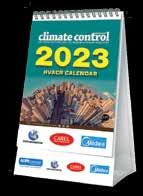
The Eurovent Summit is a non-profit event with comparatively low-ticket prices that only aim to cover part of the costs. The remaining amount is provided by our sponsors.
HAVE YOUR SAY!
We welcome your views on the Q&A. Write to editor@cpi-industry.com




September 202238
Q & A RAUL CORREDERA HAENER, EUROVENT

www.climatecontrolme.com 39 LOOKING FOR HVACR PRODUCTS? www.climatecontroldirectory.com www.climatecontroldirectory.com/register FOR ADVERTISING OPPORTUNITIES, EMAIL: advertising@cpi-industry.com TO LIST YOUR COMPANY FOR FREE, VISIT: The region's comprehensive online directory for the HVACR industry Free entry and editing deadline: November 19 Advertising deadline: November 21 2023 YOUR GATEWAY TO THE HVACR INDUSTRY IN THE MIDDLE EAST
MOBILISING FOR MIDDLE EAST
Amid financial instability, HVACR players in Turkey stay positive, banking on resumed construction activity in the region, says Nafeesa Mohammed, Features Writer, Climate Control Middle East

September 202240 COUNTRY REPORT TURKEY
HE Turkish air conditioning and heating sector has developed rapidly in terms of production and capacity, on the back of an increase in population and standard of living in the country. Meanwhile, the post-pandemic recovery of the construction sector and demand from importers, worldwide have resulted in manufacturers in Turkey feeling the need to ramp up technology and supply chains. Whilst rising inflation and economic fluctuation remain a challenge, overall growth remains bullish, with HVACR exports crossing USD 3.4 billion in the first half of 2022, up 11.7% from a year earlier. Industry players credit this growth to the fact that many postponed countrywide and global projects have restarted. If one were to go by numbers, construction permits increased by 27.8% to 709,936 units in 2021 in Turkey, resulting in 24% growth in the sales of packaged air conditioning units – splits, VRFs and rooftop units, with a corresponding value of USD 883.1 million.
Apart from growing exports, the last year has seen new partnerships and transfer-of-technology (TOT) tieups with many international brands, improving Turkey’s HVAC manufacturing capabilities. Says Ayk Serdar Didonyan, Board Chairperson, ISKID (the Turkish Air Conditioning and Refrigeration Manufacturers’ Association): “Turkish HVAC manufacturers were able to custom-produce SKD (Semi-Knocked Down) and CKD (Completely Knocked Down) production capability within the country, enhancing the HVAC sector’s competitiveness. Following highly populated countries, such as China, Japan and the United States, Turkey is among the largest and most significant markets in the global air conditioning industry.”
Uniquely situated at the crossroads of the Middle East and Europe, Turkey is an ideal location for HVACR innovations, as it is home to diverse climatic conditions – of extreme summers and winters. It is widely considered as being amongst the largest and most significant global air conditioning markets. As Didonyan puts it, “The Turkish HVAC&R industry is expected to achieve a total amount of USD 60 billion, with exports worth USD 25 billion and a domestic market size of USD 35 billion in the next decade.”

www.climatecontrolme.com 41
MARKET OVERVIEW
According to ISKID, in addition to the increase in demand for splits and VRF units, the commercial cooling and heating equipment segment is rapidly growing; for example, industrial refrigeration systems and heat pumps are seeing an increase in demand. As per ISIB (Turkish HVAC&R Exporters Association) data, there was 31.7% growth in industrial refrigeration systems and components in 2021 and a 21% growth in air conditioning systems and components in 2021.
Growth sectors for HVAC included commercial and community spaces, such as hospitals & pharmaceuticals, hotels, airports, business centres, shopping malls, restaurants, residences, offices, and commercial and governmental buildings. In the words of Seda N Temelli, Export Manager, ACS Klima, Turkey’s production capacity and product varieties are growing in response to the uptick in demand from different sectors, as facilities like hospitals, schools, and malls reopen, post-pandemic. However, demand from overseas prevails. For example, ACS exports 80% of its products worldwide, she says.
If one were to take a micro-look at the growth the country achieved, with COVID-19 forcing most employees to work from home, the split-type air conditioner market at retail and wholesale
sales increased manifold, resulting in domestic production of split-type units crossing two million in 2021. Didonyan says, the country recorded 42% growth in sales of residential single-split and multisplit models. The export market also saw record growth of 120%, he says.
Turkey also remained the largest VRF market in Europe throughout the pandemic. Owing to Euro and US Dollar exchange rate parity, demand for indoor and outdoor VRF units grew, whilst the mini-VRF market achieved 20% growth with increased housing in coastal areas, Temelli says. Didonyan adds to this by saying, “Compared with the last three years, the all-time-high export rate in 2021 signifies Turkey’s success as a regional distribution base for VRF systems.” He notes that as the number of manufacturers and new export regions increased, export numbers also increased. “We predict that export sales will exceed the sales in the domestic market within a couple of years, as domestic manufacturers focus on foreign markets,” he says.
GROWING EXPORT MARKET
Despite challenges presented by the pandemic and economic fluctuations, Turkish manufacturers have seen growing demand, especially from the international markets. Istanbul-based Kenan Kus, Market Research Consultant, BSRIA
Worldwide Market Intelligence, says that vital export markets for Turkish manufacturers include Europe, CIS countries and GCC region countries.
Spurred by growth in demand, Turkish producers reportedly have begun to put into action all pending and suspended investments, Temelli says. New product development and R&D have taken centre stage, as the threat of new virus variants persists. This has positively impacted exports. As Temelli notes: “For example, as of 2021, Turkish producers have entered into new markets, to which Turkey had previously exported almost nothing. In addition, intense construction activity in the Middle East countries especially offers great opportunities for the sector.”
Meanwhile, the African continent also offers excellent future opportunities to the sector. “Manufacturers are rapidly shifting their commercial activities towards the Middle East and African countries, as demand increases for efficient air conditioning products that meet the operational requirements of harsh climates of the region,” Temelli says.
ECONOMIC FLUCTUATIONS
The Turkish economy was hit hard by the currency shock and increasing inflation rates towards the end of 2021, which primarily affected consumer spending and investment decision. However, the



September 202242
COUNTRY REPORT TURKEY
manufacturers believe that though it does not create any challenges to demand from export markets, it is challenging for price stability, Kus says. “With inflation increased to 13.58% in December 2021 and 11.10% in January 2022, which is over 50% increase year on year, purchasing power has been decreasing,” Kus says. “With the economic uncertainty expected to continue in the coming months, it might hamper new consumer purchasing decisions in the coming years.”
Concurring with Kus, Didonyan says there is no demand-side problem from export markets. “But there are difficulties establishing stable prices in the prevailing inflationary environment,” he says. “Our exporters may face a capital meltdown, if they cannot make the right cost calculations.
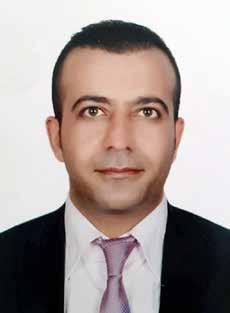
“Meanwhile, the increase in supply chain, raw material and logistics prices, which escalated with the Russia-Ukraine war, adversely affects the HVACR industry. Currently, there is more product supply shortage than product sales.”
INNOVATION POST-PANDEMIC
Turkey’s HVAC&R industry has made rapid progress in its production capacity despite all the adversities, Didonyan says. New products and features to improve indoor air quality (IAQ) against possible
virus threats became the focus for manufacturers, funnelling more investment into R&D centres. Didonyan says: “In this process, our members innovated products and technologies, such as indoor air quality sensors, air purification devices, HEPA and UV-C units for ducted air conditioners, portable hygienic air conditioners and ultraviolet LED air cleaners for air conditioners. And vaccine storage rooms have been developed and attracted attention.”
TAKING ON THE CLIMATE CHANGE CHALLENGE
As a candidate member of the EU, Turkey follows all EU legislation, such as new EER requirements and F-Gas legislation for HVAC manufacturing, Kus says. Most modern air conditioners have higher efficiency, and many of them no longer rely on harmful refrigerants, which

automatically makes them much more environmentally friendly, Temelli confirms. The consensus is that the HVAC industry must adopt eco-friendly approaches to prevent climate change and successfully tackle its effects for a better future.
“New HVAC technologies, such as solar solutions, geothermal systems and the ones sourcing energy from natural gas are some we are excited to view,” Temelli says.
According to ISKID, one of the significant issues on the Turkish HVAC sector agenda is the carbon border adjustment mechanism, which will be implemented within the scope of the European Green Deal, as part of fighting climate change. “Within this framework, Turkey must take immediate action to promote R&D projects that align with its carbon-neutrality goal, invest in clean energy in the HVAC&R industry and other industries, employ eco-friendly fluids in the

www.climatecontrolme.com 43
According to ISKID, one of the significant issues on the Turkish HVAC sector agenda is the carbon border adjustment mechanism, which will be implemented within the scope of the European Green Deal, as part of fighting climate change
Ayk Serdar Didonyan
Seda N Temelli
Kenan Kus
COUNTRY REPORT
TURKEY
refrigeration field, and turn it into zerocarbon industrial processes,” Didonyan says. “We believe that further concrete actions will be taken considering these encouraging developments in the coming period.”
THE MIDDLE EAST CONNECTION
Sharing close geographic and weather conditions with the Middle East region offers Turkish manufacturers the unique ability to meet the operational requirements of the harsh climate in the region. This is evident from the large number of innovations developed to meet the need of Middle East customers. Elaborating on this, Temelli says, “We developed products that fully compensate for the region’s high temperature and humidity levels while ensuring maximum energy efficiency through intelligent automation systems. We also introduced dehumidifiers, specifically developed for spaces containing pools, to ensure that the humidity balance in the environment reaches the healthiest conditions.”
One of the key factors contributing to the Middle Eastern market is the increasing level of construction activities, with growing income levels, and the hot and humid climatic conditions in the region. Little wonder then that the Middle East and Africa (MEA) HVAC market is projected to generate a revenue of USD 10.1 billion by 2024, Temelli says.
Many manufacturers are setting up shop in Turkey due to its proximity to the GCC region. Daikin recently announced that it has invested EU 13 million to start the production of VRV systems for the Middle East at its new factory in Turkey, which became operational in May this year. According to Daikin, the VRV market across the region is expected to grow in the future.
According to ISKID, even though Turkey’s primary HVAC&R markets are Germany, the UK, Italy, France, Romania and other EU countries, the Middle East countries are becoming the most significant potential market for Turkey. “We would like to improve our trade

volume and relations with Middle East countries,” Didonyan says.
WHAT THE WAY AHEAD LOOKS LIKE
Temelli says the Turkish HVACR industry is attracting many international customers with its large production capacity, high quality and favourable labour costs, an open market integrated with the world, and investment incentives offered by the government. The country, she said, provides attractive opportunities to foreign customers. Turkey, she said, remains an attractive destination for HVAC manufacturers to provide access to over a billion consumers from Europe and the Middle East. Sharing the same outlook, Kus says, international players, like Arcelik, Vestel, UNTES, Aldag and Daikin are strengthening their production capacity in the country, and betting on the export markets, including the Middle East, EU and CIS countries.
September 202244
AWARDS
CHAIRPERSON
Sougata Nandi, Chairperson of the Jury of the 12th edition of the Climate Control Awards, elaborates on the significance of the Awards evaluation exercise, amongst other aspects…
EATING, ventilation, air conditioning and refrigeration (HVACR) are the bedrock of the fight against climate change. Buildings consume around 40% of the global energy, annually, of which approximately 60% is used to power HVACR systems. Suffice to say, any improvement in the HVACR sector would not only positively reduce the emission of greenhouse gases but also accelerate the journey towards net-zero, an increasingly popular buzzword.
Incepted in 2011, the Climate Control Awards, with a legacy of 11 years, has been evaluating, validating and recognising the best practices of the HVACR industry in the GCC region. In this time frame, more than 300 awards have been distributed and tens of HVACR-related companies recognised for their leadership and performance. Such companies include manufacturers and managers of HVACR equipment, contractors, consultants, developers, and operation and maintenance (O&M) service providers, amongst others. In addition, the Climate Control Awards has recognised pioneering individuals and innovations. The event has annually brought together captains of the HVACR industry and is a muchsought-after, black-tie extravaganza for the industry.
Having been associated with the Climate Control Awards from its very inception quite regularly as a Jury Member and often as the Chairman, I have had the privilege of witnessing some of the pathbreaking and

industry transforming developments that subsequently became routine industry applications. These range from Variable Refrigerant Flow (VRF) technology, which made its advent in the mid-2010s, to smart cooling systems, which have been widely used on mass scale during the Haj pilgrimage. From small projects, with unique application of HVACR technology and design strategy, to large-scale District Cooling projects, using seawater for cooling purposes, the Climate Control Awards has had the privilege of evaluating diverse range of submissions.
The journey of 11 years for the Climate Control Awards has also been extremely rewarding and challenging. While the first edition had only three Jury Members and a relatively straightforward entry scoring and evaluating process, over the years many more Jury Members were incorporated. The diverse set of Jury Members represent all dimensions of the HVACR industry, bringing a 360-degree oversight of the individual
categories and their respective submissions. Commensurate with the evolving nature of the HVACR industry, coupled with the GCC region’s National Strategies on Climate Change and Sustainable Development Goals, the evaluation process of companies, technologies and projects have also evolved and become multidimensional and robust. In order to ensure that adequate and appropriate checks and balances are administered during the evaluation process, the Climate Control Awards also embeds an external auditor each year. This makes the evaluation process thorough, transparent and testing for each entry, ensuring that the ultimate winners are each vetted appropriately and are, indeed, deserving of the Awards.
The 2022 edition of the Climate Control Awards promises to be equally diligent, while aiming to bring a unique flavour to the evaluation process. As Chairman of the Climate Control Awards, it is my utmost privilege to invite all HVACR practitioners and industry captains to participate wholeheartedly in this year’s Awards. Please do utilise this opportunity to showcase your and your corporation’s achievements over the past year in the domains of innovation, commitment to ESG, energy efficiency and indoor air quality and, most importantly, your contribution to the fight against climate change.
Best wishes to all participants. Looking forward to seeing you on the winning podium at the Climate Control Awards night, later this year.

MESSAGE FROM THE
2022 12th ANNUAL CLIMATE CONTROL 5th December 2022 | Dubai, UAE www.climatecontrolme.com 45
Empower reports substantial increase in buildings using District Cooling
Says it has posted robust growth of 41.3% in the number of buildings using District Cooling over the last five years
By CCME Content Team
MIRATES Central Cooling Systems Corporation (Empower) reported a significant growth of 41.3% in the number of buildings using its District Cooling services, over the last five years.
Earlier in the year, the company reported an increase in the number of buildings using its District Cooling services, reaching 1,413 buildings by the end of 2021, representing a YoY growth of 13% compared to the same period of 2020.
During 2021, Empower said, it connected to some of Dubai’s most iconic projects with District Cooling services, most notably Marsa Al Arab, One Za’abeel, The Residences Dorchester Collection, Uptown and Wasl1, bringing the company’s share of the District Cooling market in Dubai to 80%.
Commenting on the occasion, Ahmad Bin Shafar, CEO, Empower, said: “Today, we announced an incremental growth in the reach of our services, once again demonstrating Empower’s capabilities to grow from strength to strength since
its humble beginning with two buildings, back in 2004.”
“The significant growth is a testament of Empower’s robust levels of production, operation and distribution through its advanced plants and vast transmission network. We also remain focused on continuously investing in our District Cooling infrastructure, and remain well placed to continue catering to growing market demand.”
Among the buildings that are serviced within its portfolio, the residential sector tops the list of the company’s clients with 64%, followed by the commercial sector with 15% and the hospitality sector with 14%, Empower said. Among hospitality, more than 17% of hotels in Dubai are served by its services, Empower said. The healthcare sector represents three per cent, while the remaining four per cent is distributed among retail, education and entertainment sectors, among others, Empower added.
Bin Shafar also pointed out that the continuous growth in its projects portfolio, the diversity of buildings in various
Ahmad Bin Shafar
sectors that use Empower’s District Cooling service, as well as the company’s expertise, enable it to strategically help developers and real estate owners accurately determine the required cooling load for their projects and calculate necessary costs, which helps to gain confidence and build a strong future relationship between them.
Emphasis on IAQ at Maimoon Gardens
Project will feature NASA-based IAQ technology, Fakhruddin Properties, its developer, says
By CCME Content Team
AKHRUDDIN Properties said it is gearing up to announce the launch of its latest residential project, Maimoon Gardens, with sustainability being the core focus as it makes a comeback into the Dubai real estate market.
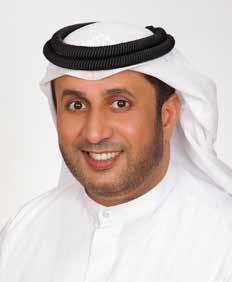
Making the announcement through a Press release, Fakhruddin Properties
said Maimoon Gardens will deliver on a promise of the cleanest air in Dubai for its homeowners. Elaborating, the property developer said it is deploying NASAbased IAQ technology to achieve the highest standards in each apartment.
The soon-to-be-announced project will be in Dubai’s JVC community and will comprise two towers featuring studio apartments, 1-, 2- and 3-BHK
apartments, offices and retail spaces, Fakhruddin Properties said. The development will deploy key energy optimisation technologies with specially automated smart homes that will be projecting energy savings up to 30%, it added.
The project will also feature a Community Green House with radiant cooling technology.
September 202246
REGIONAL NEWS FOR MORE NEWS STORIES, VISIT WWW.CLIMATECONTROLME.COM NEWS FROM AROUND THE REGION FOLLOW US ON LINKEDIN FOR BREAKING NEWS: CLIMATE CONTROL MIDDLE EAST FOLLOW US ON YOU TUBE FOR VIDEOS: CLIMATECONTROLME
Tadweer in initiative to convert GHGs to energy


Abu Dhabi-based body signs consultancy agreement with KEO for a feasibility study for converting greenhouse gases extracted from Al Dhafra landfill
 By CCME Content Team
By CCME Content Team


BU DHABI Waste Management Center (Tadweer) signed a consultancy agreement with KEO International Consultants to conduct a feasibility study for developing a project on extracting greenhouse gases from Al Dhafra landfill and converting them into environmentally friendly energy. Making the announcement through a Press release, Tadweer said the initiative is aligned with its plan to achieve an efficient waste management system and use the best methods for processing and handling waste.
Under the agreement, KEO International Consultants will provide consulting services and a feasibility study that covers the technical, financial and environmental aspects for the development and operation of the project to extract and convert gas into environmentally friendly energy sources, Tadweer said. This will include studying the requirements of the local market and the UAE’s needs for the project and areas for benefiting from the greenhouse gases generated in the landfill in Al Dhafra, Tadweer said. The agreement also
includes drilling operations, gas pumping tests and the quantities expected to be generated within 10 years within the specified site, as well as evaluating the properties of the extracted gas, Tadweer said. KEO will also develop and set the terms of the bid before announcing the bidding for the project, Tadweer added.
Abdul Mohsen Mubarak Al Kathiri, Director of Projects and Facilities Department at Tadweer, said: “The signing of the contract comes as part of the Center’s efforts to enhance cooperation with the parties concerned to develop waste treatment services, convert waste into energy, and invest it in a sustainable and safe manner that supports the national economy, and serves the sustainable development goals in the Emirate of Abu Dhabi. This comes in line with the Center’s strategic plan, which is being implemented in line with Abu Dhabi Vision 2030.
“Through the consultancy agreement, we look forward to implementing the project, in line with the best standards and practices and in a manner that meets the requirements of the Emirate of Abu Dhabi to enhance environmentally friendly energy sources, leading to a brighter and more
sustainable future for coming generations.”
According to Tadweer, the landfill in Dhafra has undertaken remarkable environmental efforts represented in the extraction and sorting of recyclable materials from the landfill in order to reduce environmental impact and achieve optimal use of resources. In 2021, a total of 25,524 tons of waste were extracted, and during the first half of 2022, 12,542 tons of waste have been extracted for the purpose of reuse and recycling, including plastic waste, paper, cardboard, iron, wood and aluminium.
www.climatecontrolme.com 47
Abdul Mohsen Mubarak Al Kathiri
// REGIONAL NEWS
AESG says it is enabler for WiredScore, SmartScore accreditations
Firm says it will help building owners create smart, connected buildings that support enhanced digital experiences for occupants
 By CCME Content Team
By CCME Content Team
S THE Middle East’s digital transformation advances at an accelerated pace, smart buildings – which underpin the success of these initiatives by enabling seamless delivery of digital services – have become a focal point of investment, AESG said through a Press release. The consultancy, engineering and advisory firm was speaking on the occasion of becoming an enabler for developers, building owners and facilities managers in achieving WiredScore and SmartScore certifications. The firm claimed it is among the first firms in the Middle East with accredited professionals to guide aspirants to the certifications.
Globally, the digital transformation market is projected to grow at a CAGR of 10.9% between 2021 and 2026, reaching USD121.6 billion, AESG said, adding that it wants to play a key role in supporting the momentum.
The two globally recognised
certifications have been developed to create technologically advanced buildings with world-class, uninterrupted connectivity that helps advance functionalities, such as collaborative working, health and well-being, safety, security and sustainability, and supports the incorporation of future innovations, AESG said. These benefits translate to the ability to attract and retain tenants and increase rental value, with studies showing that the WiredScore certification increases a property’s rental value by an average of five per cent, AESG said.
“Work and living spaces have fundamentally changed in recent decades, and high-quality, uninterrupted connectivity is now as vital to occupants as running water,” said Saeed Al Abbar, CEO, AESG. “In fact, quality of digital connectivity places second only to location among the top criteria tenants look for when moving to a new office. Smart buildings are fundamentally
shifting the real-estate market, forcing building owners and landlords to re-evaluate functionalities ranging from user productivity and well-being to environmental impact. These stakeholders must now recognise that advanced, sustainable digital infrastructure is the foundation of the ongoing revolution to make buildings smarter and thereby enable a more collaborative, innovative, and dynamic future.”
According to AESG, two of its professionals – Rohan Chandavarkar, Associate Digital Delivery and Mark Derbyshire, Commissioning Manager – have been comprehensively trained under the WiredScore and SmartScore accreditation programmes. They will now work closely with AESG’s clients to understand, improve and communicate the user functionalities and technological foundations of their buildings to deliver exceptional user experience, drive cost-efficiencies, meet high standards of sustainability and futureproof buildings, the firm said.
September 202248 // REGIONAL NEWS
AESG said it estimates the typical certification period for WiredScore and SmartScore to be between three and four weeks. Following certification, the firm, together with WiredScore, will help promote the building by defining a bespoke leasing and marketing strategy
that includes information, such as tenant engagement guides, building fact sheets and building roadmaps that will help the client provide training to leasing teams, brokers and project managers, it said.
During the initial launch phase,
AESG will primarily target commercial buildings – both existing and in development – in the UAE. Building on this success, the firm intends to subsequently expand the offering to the rest of the GCC region, United Kingdom and Singapore in due course, it said.
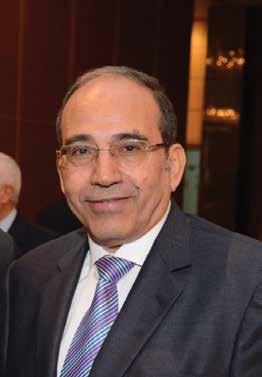
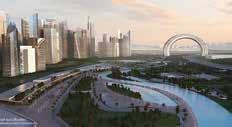
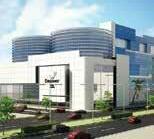

FOUNDED TO LEAD
Allied has grown into one of the leading Engineering and Project Management firms in the Middle East, boasting offices in 3 major Countries in the Middle East (Egypt, United Arab Emirates, Kingdom of Saudi Arabia).
Allied offers full range of Engineering and Project Management services provided by nearly 140 dedicated professionals distributed among Egypt, UAE and KSA.
The company is a multidisciplinary consulting firm and has a track record and specialization in Buildings, Industrial Works and District Cooling and Power Generation Plants.
www.climatecontrolme.com 49
// REGIONAL NEWS
Leminar acquires Clima Uno Air Conditioning Industries
Pramodh Idicheria, COO, Leminar Global, speaks of both companies having a common customer base and objective to provide the market with innovative HVAC solutions
By CCME Content Team
EMINAR Air Conditioning Company has acquired Clima Uno Air Conditioning Industries. Making the announcement through a Press release, Leminar described the acquisition as a strategic move, which will unite the two companies in their common mission of providing the most reliable HVAC solutions to the market.
Leminar said its comprehensive solutions and extensive distribution network will enable Clima Uno to manifold its foothold in the region. Clima Uno will continue to offer a range of Euroventcertified air-handling units, fresh-airhandling units, fan-coil units, ecology units and energy-recovery ventilators to clients across the HVAC industry, Leminar said. Commenting on the acquisition,
Pramodh Idicheria, Chief Operating Officer, Leminar Global, said: “Since both companies share a common customer base and objective to provide the market with innovative HVAC solutions, Clima Uno Air Conditioning Industries will operate as the manufacturing arm and function as one of the multiple brands under Leminar’s product portfolio. The move will witness an integration of both companies’ resources, such as the sales, design and production teams, catapulting Clima Uno’s growth in the Gulf.”
Kartik Raval, Senior General Manager, Leminar Air Conditioning Company, said: “The strategic decision to acquire Clima
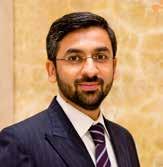

Uno is but a natural win-win for both companies, which will enable Leminar and Clima Uno to continue to jointly cater to the needs of the UAE market through building on the shared synergies between both companies. We look forward to enhancing our manufacturing capabilities with Clima Uno’s fully integrated, stateof-the-art manufacturing facility while contributing to the growth of the region.”
Taka signs Aqaar retrofit project in Ajman
Company says it is supporting Aqaar Community Management’s energy-saving plan for Falcon Towers, which will benefit from estimated cost savings of 40% and see reduced consumption by 7.1 million KW per year after the retrofit
By Nafeesa Mohammed | Features Writer, Climate Control Middle East
ubai-based energy services company, Taka Solutions, announced the signing of a partnership with Aqaar Community Management to support the developer with an AED 29 million energy-efficiency project. The project will replace and retrofit building systems, such as chillers, chilled water pump systems and hundreds of thermostats across the Falcon Towers’ eight buildings, Taka revealed. When completed, the energy efficiency project is estimated to save 40% on utility costs and reduce consumption by 7.1 million KW per year, the company further said.

Zakareya Al Kamali, General Manager, Aqaar Community Management, and Mohammed
Abdulghaffar Hussain, Chairman, Taka Solutions and Chairman and Co-Founder, Creek Capital, signed the partnership document for the project.
Speaking to Climate Control Middle East on the sidelines of the signing ceremony, Henrique Pereira, Chief Executive Officer, Taka Solutions, said that under the 10-year partnership, Taka would undertake the replacement of 16 chillers and retrofit five others, while at least 16 chilled water pumps and hundreds of thermostats that form part of the HVAC system will be replaced.
The wider scope of the project includes energy-efficient lighting, building automation and smart monitoring systems to enable efficient and coherent operation, according
to weather conditions and occupancy patterns to enhance comfort.
Pereira said: “This is the largest energy-efficiency project, not only for Taka but also for the Emirate of Ajman. I hope this is just the first of many more projects of this kind aimed at reducing the impact on the environment and improving the comfort of the building’s occupants.”
September 202250 // REGIONAL NEWS
Kartik Raval Pramodh Idicheria
L-R: Henrique Pereira, Mohammed Abdulghaffar Hussain, Zakareya Al Kamali and Ashraf Abubakkar, Manager, Aqaar Property Management
Danfoss raises sales expectations for 2022
Company says outlook is based on the fact that it grew by EUR 1.6 billion in the first six months of the year, reaching EUR 4.9 billion in sales
By CCME Content Team
ANFOSS is transforming, with half-year results setting a strong foundation to deliver on Core & Clear Strategy 2025. In the first six months of 2022, Danfoss said through a Pres release, it grew by EUR 1.6 billion, reaching EUR 4.9 billion in sales. The acquired hydraulics business added sales of EUR 1.1 billion, while organic growth was 13%, the company said According to Danfoss, growth was broadly based across the major markets of North America, Europe and Asia-Pacific, as well as in all three business segments. The Danfoss Power Solutions segment, which provides mobile and industrial hydraulics and electrification solutions, stood out with significant growth, the company said. Furthermore, the increasing demand for energy-efficient heating and cooling solutions, as well as power electronics, was driving a growing demand for technologies from Danfoss Climate Solutions and Danfoss Drives, it added.

On July 15, 2022, Danfoss signed an agreement to sell its Russian activities to local management in Russia. Closing of the transaction is expected in September 2022, the company said.
Danfoss said it continued significant investments in innovation (R&D), up 38% from the first half, last year. At the same time, Danfoss said, it delivered a 27% increase in operating profits with EBITA of EUR 570 million. Net profit amounted to EUR 289 million, negatively impacted by the write-down of net assets related to the Russia exit, it added.
Kim Fausing, President & CEO, Danfoss, said: “Danfoss is transforming at full speed, and I am very pleased with the outstanding teamwork and strong performance of our teams around the world, despite the challenging times. With the transformational half-year results, we are setting a strong foundation to deliver on our Core & Clear Strategy 2025, fueled by bold investments for our long-term success. In a challenging business
environment, we maintained our strong growth momentum, while keeping the integration of the hydraulics business well on track. On top of this, we closed the Semikron Danfoss transaction. The world is on the tip of an electrification revolution, and with this, we take an important step building a leading position. With the results for the first half and the closing of the Semikron transaction, we have raised our sales expectations for 2022.
“We have taken a big and bold step to put sustainability at the center of our Core & Clear 2025 strategy. The new ESG ambitions are clear, and our climate targets have been approved by the Science Based Targets initiative. We are energized by our promise to be the leading technology partner for our customers, decarbonizing through energy efficiency, machine productivity, low emissions, and electrification. Danfoss has never been better positioned to deliver on our purpose to engineer tomorrow to build a better future.”
September 202252 GLOBAL NEWS HAPPENINGS FROM AROUND THE WORLD FOR MORE NEWS STORIES, VISIT WWW.CLIMATECONTROLME.COM FOLLOW US ON LINKEDIN FOR BREAKING NEWS: CLIMATE CONTROL MIDDLE EAST FOLLOW US ON YOU TUBE FOR VIDEOS: CLIMATECONTROLME
Kim Fausing
CAREL to participate in Chillventa
Company says it will be presenting its latest sustainable solutions that optimise energy performance of HVACR systems
By CCME Content Team
AREL said it will be participating in Chillventa, from October 11 to 13, in Nuremberg, Germany. Making the announcement through a Press release, the Italy-headquartered company said it will be at Stand 5-306/308, Hall 5 of the Chillventa venue, where it will be presenting its latest sustainable solutions that optimise the energy performance of HVAC and refrigeration systems.
CAREL said that in a period of transition between the pandemic and the future uncertainty surrounding energy resources, it will be participating at the event with the awareness of the need to continue to guarantee energy efficiency and optimal performance through solutions that effectively reduce energy consumption and, thus, help mitigate higher energy costs and limit environmental impact. Indoor Air Quality (IAQ) continues to be of utmost importance, and the systems that manage it need to respond to the current energy situation, CAREL said. Moreover, the consequences of any choice regarding the use of resources have an impact on our immediate future, due to pollution and the need for a cleaner living environment, it said. Sustainability is, thus, an essential aspect for future industries, which need to protect the context in which they operate, in line with ESG objectives, it said. Another aspect that is no less crucial for a sustainable future is digitalisation and the need to use data securely and confidentially, it added.
For all these reasons, CAREL said, its offering for HVAC is focused on improving air quality, combining health, efficiency and comfort. The company said its control solutions for the management of air-handling
units respond to the need for efficient energy recovery. These include air humidity control systems, presented in collaboration with its subsidiary, HygroMatik, and include continuous monitoring of the infrastructure through service proposals based on IoT platforms, guaranteeing health and safety while increasing overall performance and efficiency throughout the entire system life cycle, it said. The solutions designed for the complete management of chillers and heat pumps also meet the main energy requirements, including compatibility with the current F-gas directive and adaptability for operation with natural and low-GWP refrigerants, it added.
CAREL said the use of these refrigerants is one of its strengths. It said it is committed to guaranteeing the performance of its refrigeration systems while ensuring they meet sustainability requirements. CAREL said it has from the latest controllers for compact HFC and HFO compressor racks and a complete range of case controllers, to highefficiency solutions for semi-plug-in showcases in water loop systems and combined solutions that boost synergy between different energy-consuming units and areas, typical of refrigeration systems, such as in hypermarkets, supermarkets and convenience stores.
CAREL said it will also be presenting two important innovations that revolutionise efficiency and usability in the main commercial refrigeration applications: A solution that makes commissioning and field service for installers easier and faster, and a controller with functions specifically designed for the management of chillers in medical and scientific applications.
CONDAIR HP
In-duct high-pressure spray humidifier
Condair HP units are manufactured according to HACCP principles and operates on pure reverse osmosis water, ensuring the water being introduced to the air is hygienic
Condair HP Series
• Low energy, high capacity humidification and cooling
• Can supply multiple AHUs from one pump station
• Humidification and evaporative cooling
• High quality stainless steel construction
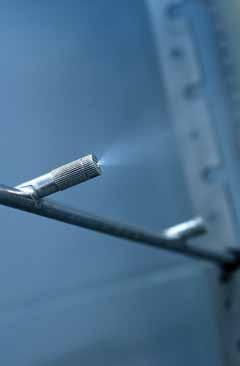
• Easy to install and low service requirement
Contact us for free expert advice
Tel: +(971) 4 368 8491
Email: me.sales@condair.com
Web: www.condair.ae
Humidification, Dehumidification and Evaporative Cooling
www.climatecontrolme.com 53
// GLOBAL NEWS
Ad_ME-Condair HP-60x277mm_ID2022.indd 1 27.08.2022 13:47:59
Armstrong expands its India centre
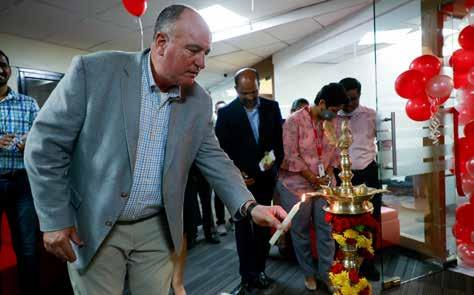
New Engineering and Capability Centre, in Bengaluru, receives attention
By CCME Content Team

RMSTRONG Fluid Technology said it has moved its Engineering and Capability Centre to a new, expanded office space in Bangalore, India, to help support increased demand in the Indian marketplace. Making the announcement through a Press release, Armstrong said the new centre will also support Armstrong’s two Indian manufacturing facilities.
Armstrong said the formal opening ceremony was held in mid-July and was attended by senior partners of local Indian engineering firms, tech companies and contractors, as well as global leaders in the Armstrong organisation.
Reflecting on the move to a larger workspace and more central location for employees, Jiji Joseph, Commercial Director and Country Leader, India, said: “The move to new offices provides more space to accommodate the steady growth of Armstrong’s employee base in India. It also reflects our desire to be located closer to our major customers and closer to the talent pool.”
In his address to the assembled guests, Michael Fischer, Global Commercial Director, Building Business, said: “We’re committed to working closely with customers and being
responsive to their needs. We can help elevate the performance levels of their mechanical systems, meet their goals for sustainable operations and reduce costs at the same time.”
Executive Chairman, Charles Armstrong addressed the event via a recorded video. In his message, he emphasised the need for values-based leadership in the world of business. “As a values-driven organization, Armstrong has always worked to serve the needs
of customers,” he said. “We are all very proud of the achievements of Armstrong, particularly how employees in India have so often leveraged their skills to serve customers around the world.”
Armstrong India was founded in 2004 for mainly sourcing impellers and mechanical components, the company said. Over the years, it expanded into engineering, the Capability Centre and two manufacturing facilities, the company said, adding that it employees more than 300 people in India.
September 202254
// GLOBAL NEWS
LOOKING FOR REFRIGERATION PRODUCTS? www.refrigbuyersguide.com TO LIST YOUR COMPANY FOR FREE, VISIT: www.refrigbuyersguide.com/register FOR ADVERTISING OPPORTUNITIES, EMAIL: advertising@cpi-industry.com The largest database of refrigeration products & suppliers in the Middle East
ASHRAE invites early registration for its Winter Conference
Technical programme tracks include ‘Grid Resilience and Thermal Storage’, ‘Pathways to Zero Energy Emissions and Decarbonisation’, and ‘Innovative Responses to Supply Chain Challenges’
By CCME Content Team
SHRAE said registration is now open for the 2023 ASHRAE Winter Conference, from February 4 to 8 in ASHRAE’s global headquarters city, Atlanta, Georgia. Making the announcement through a Press release, ASHRAE said registration for the conference provides entry to the cosponsored AHR Expo, scheduled to take place from February 6 to 8 at the Georgia World Congress Center.
“Each year, the ASHRAE Winter Conference and AHR Expo provide built environment professionals with industry-leading events and experiences and the best resources and presenters to deliver cutting-edge knowledge to address today’s challenges,” said 202223 ASHRAE President, Farooq Mehboob. “Attending the Winter Conference and AHR Expo provides a wonderful opportunity to reconnect with colleagues, make new professional connections and inspire innovative thinking. We are thrilled to return to our global headquarters city and look forward to a successful event.”
According to ASHRAE, the Winter
Conference Technical Program will offer more than 80 technical sessions, within nine tracks. Professional development hours can be earned for all sessions and most online sessions upon successfully completing a short quiz, ASHRAE said.
According to ASHRAE, the complete technical programme will be available in the fall of 2022. The tracks include:
• Fundamentals & Applications
• HVAC&R Systems and Equipment
• Refrigerants and Refrigeration
• Grid Resilience and Thermal Storage
• Pathways to Zero Energy Emissions and Decarbonisation
• Multifamily and Residential Buildings
• Operations and Maintenance
• Building Simulation and Virtual Design in Construction
• Innovative Responses to Supply Chain Challenges (mini track)
In addition to the technical programme and AHR Expo, attendees can look forward to updates from Society leaders, general and technical tours around
Atlanta and social events, including the Welcome Party at the Georgia Aquarium, ASHRAE said, adding that leading up to and during the conference, it will also conduct business, committee and technical meetings.

ASHRAE said President Mehboob will provide an update on the 2022-23 Society theme, “Securing Our Future”. Members will be recognised for their industry and Society accomplishments, ASHRAE said, adding that major contributors to ASHRAE will also be recognised.
According to ASHRAE, the cost to attend the conference in-person is USD 680 for ASHRAE members (USD 935 for non-members, which includes an ASHRAE membership for one year). Early bird discounts are available for registrations completed prior to October 30, ASHRAE said.
The cost to attend the conference virtually is USD 410 for ASHRAE members (USD 460 for non-members, which includes an ASHRAE membership for one year), ASHRAE said, adding that those interested may register at ashrae.org/2023winter.
www.climatecontrolme.com 55 // GLOBAL NEWS
IIASA: Propane is quite peerless
A new study finds that switching to propane as a refrigerant could lessen the global temperature increase from space cooling, compared to even new boys on the block
By CCME Content Team
STUDY led by IIASA researcher, Pallav Purohit, in collaboration with researchers from the United Nations Environment Programme and the University of Leeds, showed that by switching to propane, an alternative low (<1) global warming potential refrigerant for space cooling, we could avoid a 0.09 degree C increase in global temperature by the end of the century, thereby making a significant contribution towards keeping the global temperature rise below 1.5 degrees C.
In the study published in Proceedings of the National Academy of Sciences of the United States of America (PNAS), researchers used the IIASA Greenhouse Gas - Air Pollution Interactions and
Synergies (GAINS) model to compare the baseline halogenated refrigerant emission scenarii with scenarii of switching to HFC32 or propane. While the switch to HFC32 also lessened the global temperature increase (0.03 degree C by the end of the century), propane proved to be the superior solution in terms of sustainability, according to IIASA.
“Propane exhibits significant environmental advantages through good energy performance and a global warming potential of less than 1,” Purohit said. “In split-ACs, up to 7 kW, propane can be classified as a technically valid alternative to HFC-driven split-ACs.”
Energy-efficient split ACs, using propane, are already available
commercially in the Chinese and Indian markets, IIASA said. Despite performing similarly to split ACs using HFC-32, and even better than the currently widespread appliances using HFC-410A and HCFC22, some national regulations prohibit their use, primarily due to standards and codes restricting the use of refrigerants with higher flammability, hindering their wider adoption, IIASA said.
“To achieve the EU’s ambitious 2050 climate-neutrality targets, early and aggressive action is needed,” Purohit said. “In the short term, converting new air conditioning systems to more environmentally friendly refrigerants can reduce their climate impact significantly, underlining the urgency of updating standards for policymakers.”
Johnson Controls invests in Nozomi Networks
Signs framework agreement for providing Nozomi Networks’ cybersecurity services
By CCME Content Team business continuity, said Vijay Sankaran, Chief Technology Officer, Johnson Controls. “Our investment in Nozomi Networks’ leading threat assessment toolset reflects the importance of cybersecurity in this digital transformation.”
OHNSON Controls and Nozomi Networks, which provides operational technology (OT) and Internet of Things (IoT) security solutions, announced the signing of a framework agreement, which will allow Johnson Controls to utilise the Nozomi Networks toolset for the benefit of its customers. Johnson Controls said it also participated in last year’s USD 100 million funding round for Nozomi Networks – further signalling its commitment to deliver high quality, robust and specialised cybersecurity solutions for its OpenBlue secure communications stack.
“Johnson Controls is at the forefront of digitizing the built environment through our innovative OpenBlue platform, and we are continuously looking for opportunities to maximize safety, improve efficiency and ensure
Johnson Controls recently announced its purchase of Tempered Networks, which will be embedded into the OpenBlue platform, a flexible computing approach for converging building technologies and making those technologies more insightful, powerful and optimized. Tempered Networks protects secure buildings data from edge to cloud with zerotrust-based Airwall technology. Nozomi Networks’ capabilities can further extend the capabilities of a customers’ IoT infrastructure by providing additional cybersecurity threat monitoring and visibility features and functionality, Johnson Control said.
According to Johnson Controls, Nozomi Networks is valued for superior operational visibility, advanced OT and IoT threat detection and strength across deployments. Nozomi Networks solutions support more than 74 million devices in thousands of installations across energy, manufacturing, mining, transportation, utilities, building automation, smart cities and critical infrastructure, Johnson Control said. Nozomi Networks products are deployable onsite and in the cloud, and span IT, OT and IoT to automate the hard work of inventorying, visualising and monitoring industrial control networks through the innovative use of artificial intelligence, Johnson Controls said. Use cases stretch beyond cybersecurity and include troubleshooting, asset management and predictive maintenance, Johnson Controls added.
September 202256 // GLOBAL NEWS
Johnson Controls announces cutting Microsoft Beijing’s energy footprint



Company says it has helped the IT major’s China operations achieve energy savings of 27.9% through continuous retrofitting and optimisation
 By CCME Content Team
By CCME Content Team



OHNSON Controls (JCI) said it has partnered with Microsoft Beijing Campus for its ongoing retrofit and optimisation of building operations, achieving 27.9% energy savings and ensuring key equipment uptime to 98%. As a result, the campus has been granted an energy saving endorsement and financial subsidy by the Beijing Municipal Government and the Haidian District Government, JCI said.
“China’s pledge to ensure carbon emissions peak by 2030 and achieve carbon neutrality by 2060 places a huge responsibility on its buildings sector to dive deeply into the latest sustainable engineering technology,” said Anu Rathninde, President, Asia Pacific, JCI. “In this project, we joined hands with Microsoft to raise the bar on what is possible for energy-efficient buildings, and their faith in Johnson Control AIenabled OpenBlue Net Zero Buildings solution has been proven out. The energy and emissions savings on their Beijing Campus project help Microsoft and us highlight what is now possible, sustainability-wise, for retrofit buildings programs in China.”
The Microsoft Beijing Campus consists of two buildings with a total building area of 148,000 square metres, The campus has now successfully passed an energy audit conducted by Haidian District, Beijing, with new annual energy savings of 27.9%, JCI said. That includes work to upgrade existing chiller systems, achieving 30% better energy efficiency, JCI added.
A key strategy in reducing carbon emissions was to enable energy-efficient operations management, JCI said. The Microsoft real estate and facilities team migrated the applications and data storage of the different systems –power supply, building controls, energy management and smart management


to Azure platform, creating a central, integrated “digital brain” for the Campus, JCI said. This was coupled with JCI’s AI-enhanced OpenBlue Enterprise Manager (OBEM), with the combination resulting in far more efficient building management, improved user experience and a significant reduction in the energy consumption of daily operations, JCI said.
Microsoft Beijing Campus also uses its Metasys Building Automation System (BAS), JCI said. By monitoring the cooling and heating equipment, Metasys system feeds large amounts of data into OBEM for analysis, JCI said. During the retrofit, Metasys was upgraded and integrated with legacy BAS, JCI said. With more sub-systems connected into Metasys, field operations risk was reduced, and human resource use was optimised, JCI said.
As well as providing the technology, JCI said, its service team for controls systems are now able to use the additional insights being generated to achieve more than 98% uptime


of key equipment and increase the level of operational automation. The improvements add to the sustainability work that it has been supporting Microsoft Beijing Campus with since 2010, JCI said. That earlier collaboration saw the campus reducing power consumption by more than 30 million kilowatt-hours from 2011-2020, JCI added.
The long-term project with Microsoft, JCI said, adds to a growing portfolio of projects demonstrating the potential to cost-effectively use advanced technology to reduce emissions using the OpenBlue platform.






www.climatecontrolme.com 57 // GLOBAL NEWS
EIA urges probe into Europe’s refrigerant black market
Call for investigation into climate-damaging refrigerant gases, following alleged inaction by Romania
By CCME Content Team

HE Environmental Investigation Agency (EIA), more than a year after first revealing the extent of the illegal multi-million-euro trade in climate-damaging hydrofluorocarbons (HFCs) in Europe, is urging the European Public Prosecutor’s Office to launch an investigation into the growing black market in greenhouses gases.
As part of a gradual phase down in using HFCs, the EU has introduced a quota system via its F-Gas Regulation to limit the volume of these greenhouse gases on the market, EIA highlighted. It cut the supply by 37% in 2018, which caused prices to skyrocket and fuelled a lucrative black market across Europe, EIA said, adding that more recently, it has identified Romania as a major gateway for HFC smuggling.
EIA said how its report, Europe’s Most Chilling Crime, in July 2021, exposed how apparently illegal cylinders of Chinesemade HFCs entered Romania via Ukraine and Turkey and were then shipped around the continent through courier services and in the luggage compartments of transnational coaches.
Apart from identifying the smuggling routes, the report named individuals and companies involved in the illegal trade, EIA said. To bypass border controls, smugglers exploited loopholes

in the F-Gas Regulation and customs procedures, paid off corrupt officials and benefited from lax border controls, EIA claimed.
“Despite giving Romanian law enforcement our evidence 12 months ago, no action appears to have taken place,” said Fionnuala Walravens, Senior Climate Campaigner, EIA. “The illegal trade not only jeopardises the achievement of the EU’s climate objectives, but it has also resulted in the loss of approximately €77 million a year in VAT and customs duties. So, in a first for EIA, we are now asking the European Public Prosecutor’s Office, which
exists to protect EU taxpayers’ money from criminals, to investigate this growing black market in greenhouses gases.”
EIA said its investigation compared data reported under the EU F-Gas Regulation with trade data and other multiple information sources, estimating that the volume of illegal HFCs smuggled into the EU amounted to between 20% and 30% of the legal trade. Losses to legitimate businesses are significant, it said, adding that in 2020, Europe’s five major HFC manufacturers noted that illegal imports cost about USD 500 million in lost profits per year.
September 202258 // GLOBAL NEWS
LOOKING FOR REFRIGERATION PRODUCTS? www.refrigbuyersguide.com TO LIST YOUR COMPANY FOR FREE, VISIT: www.refrigbuyersguide.com/register FOR ADVERTISING OPPORTUNITIES, EMAIL: advertising@cpi-industry.com The largest database of refrigeration products & suppliers in the Middle East

LOOKING FOR REFRIGERATION PRODUCTS? www.refrigbuyersguide.com Refrigeration BUYERS’ GUIDE 2023 Your reference hub to the refrigeration industry in the Middle East FOR ADVERTISING OPPORTUNITIES EMAIL: advertising@cpi-industry.com The largest database of refrigeration products & suppliers in the Middle East
{Quoteyard}
We bring you a collection of some of the most interesting quotes, extracted from articles in this issue. In case you missed reading, we recommend you flip back to take full advantage of the insights and remarks, in the context in which they have been presented.
With the possibility of job cuts looming in the fourth quarter, it is likely that as many people would want to be seen to be working at this time of the year than perhaps any time during the past 15 years. The pressures on companies in terms of rising costs is poised to put them in a tough spot in terms of staff rolls.
Due to its instant thermal regulation properties, liquid crystal dynamic glazing provides a direct contribution to reducing emissions and HVAC operations. Being able to control the amount of light and heat that is absorbed or dispersed, the need for air conditioning and lighting can be from 1020% less. Of course, this reduction depends on the exposure of the building and the geographical climate conditions.
GCC region manufacturers must evaluate the results of AHRI’s published research, including their performance under high-ambient conditions. The research was a combined effort of manufacturers, testing bodies, governments, academia and others.
p8
p14
Statistics indicate that regular commissioning of equipment prevents a nine per cent performance degradation, helping to maintain optimal long-term pump efficiency, maximise uptime, and avoid disruptions or emergency repair costs.
To beat the heat and achieve the desired indoor temperature, the doors were narrowed to keep out the warmth, and the beautiful large glass dome was isolated against the sun’s rays. These measurements worked partially and were not nearly enough.
Inverter design of compressors, coupled with electronic monitoring of refrigerant flow, enables the system to run at exactly the same capacity as the room load demands at that time.
What makes matters worse, he says, bristling with anger, is they could flee the country, leaving no one to take care of the equipment. All the defects that subsequently happen have to be managed by the OEM.
You need to have very strong relationships in the industry with our associates’ side and build the networks. So, strengthening relationships and leveraging those relationships are important.
Since the filter wasn’t changed in some time, it became quite dirty, came loose from its support, and became airborne, ultimately being sucked into the unit. Since the unit operated with no filters for some time, the heat wheel, which is intended to recover air side energy from the building exhaust, has become dirty, reducing the unit efficiency.
What originally started with one regional chapter – Eurovent Middle East – has developed into a comprehensive and coordinated international effort, with the goal to create a level playing field and the highest efficiency and sustainability standards all over the globe.
September 202260
p18 p25
p6
p21
p30 p35
p27 p29


























































www.careersbay.com For all your headhunting needs, please contact: or email +971 50 3580708 alissa@careersbay.com
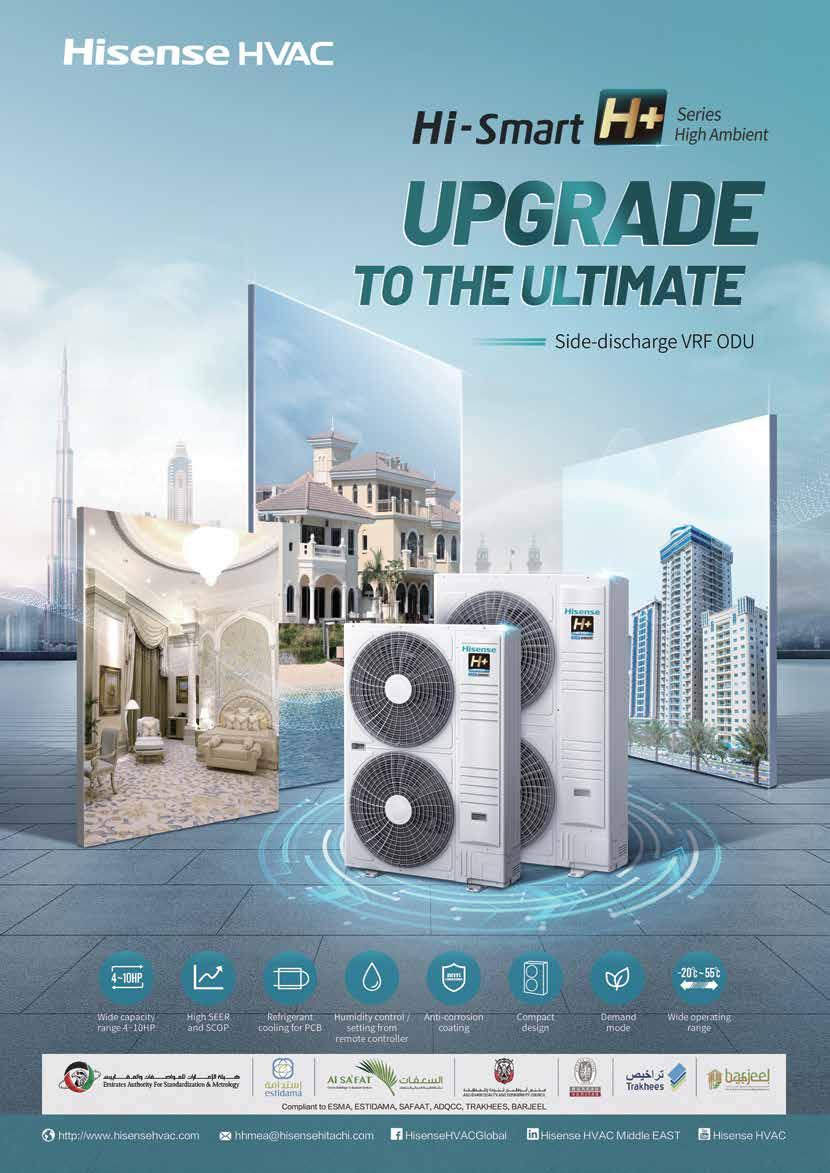


















































































 By CCME Content Team
By CCME Content Team
 By CCME Content Team
By CCME Content Team















































